Tag: Bedroom
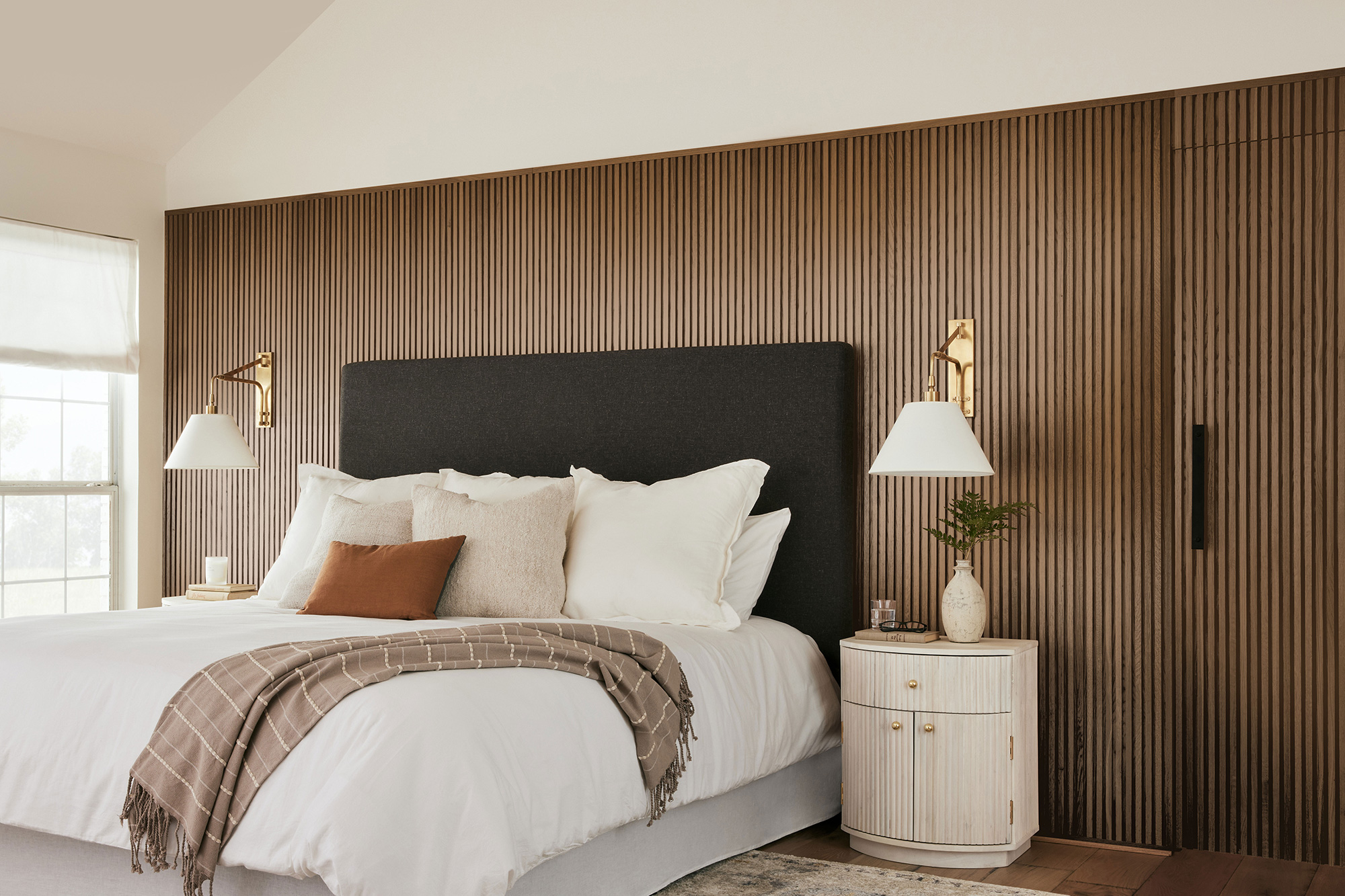
MAGNOLIA HOME: TURN YOUR BEDROOM INTO A SERENE ESCAPE
August 1, 2022Our bedrooms should reflect our own personal style. Choices in accents and décor, bedding, or furniture can immediately change the feel of the space you lay your head. Bedrooms serve as the place we escape to relax and rejuvenate after a long day, so making your bedroom a haven for yourself is important. Color can play a big part of the overall vibe of your bedroom and choosing a serene color that will complement your personal style will help you feel at home.
“When you can ground a room in an understated neutral, it allows you to get creative and personalize the space with furniture, textiles, and accents that stand out.” – Joanna Gaines
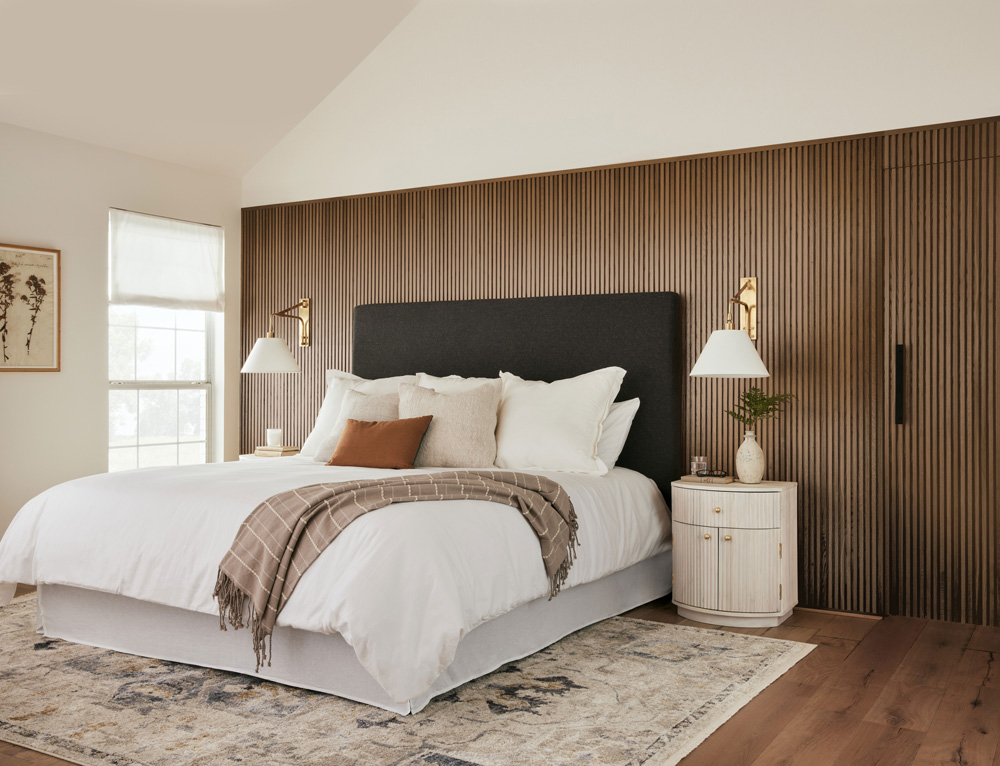
This bedroom extenuates a sophisticated style, while bringing in natural materials to soften the modern décor. The walls and ceilings are bathed in a featured color from the Magnolia Home by Joanna Gaines® paint line, Blanched, a warm beige destined to bring serenity to any space. The neutral color allows for the stained accent wall to be the wow factor.
Adding in other materials is a great way to add depth and texture. The wooden accent wall is colored in Magnolia Home by Joanna Gaines’s Interior Wood Stain in an earthy yet warm tone, Woodsy Escape. The interior stain is available in twelve curated colors to enhance the natural beauty of your interior wood surfaces.
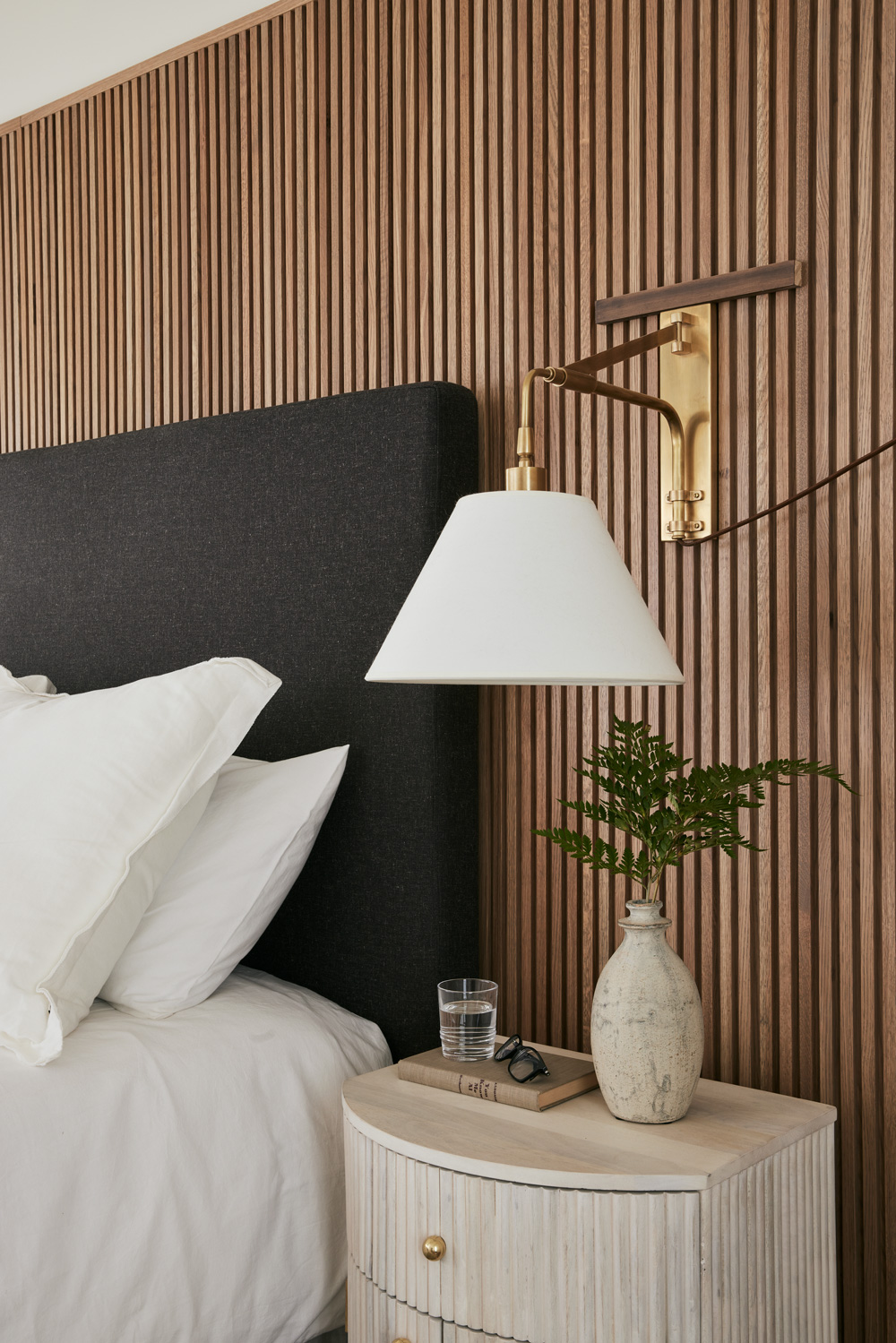
Complementing the space with gold accents, like those on the sconces and nightstand hardware, clean bedding, and textured nightstands, bring modern and natural elements together seamlessly, evoking a relaxing and serene bedroom for you to unwind and rejuvenate.
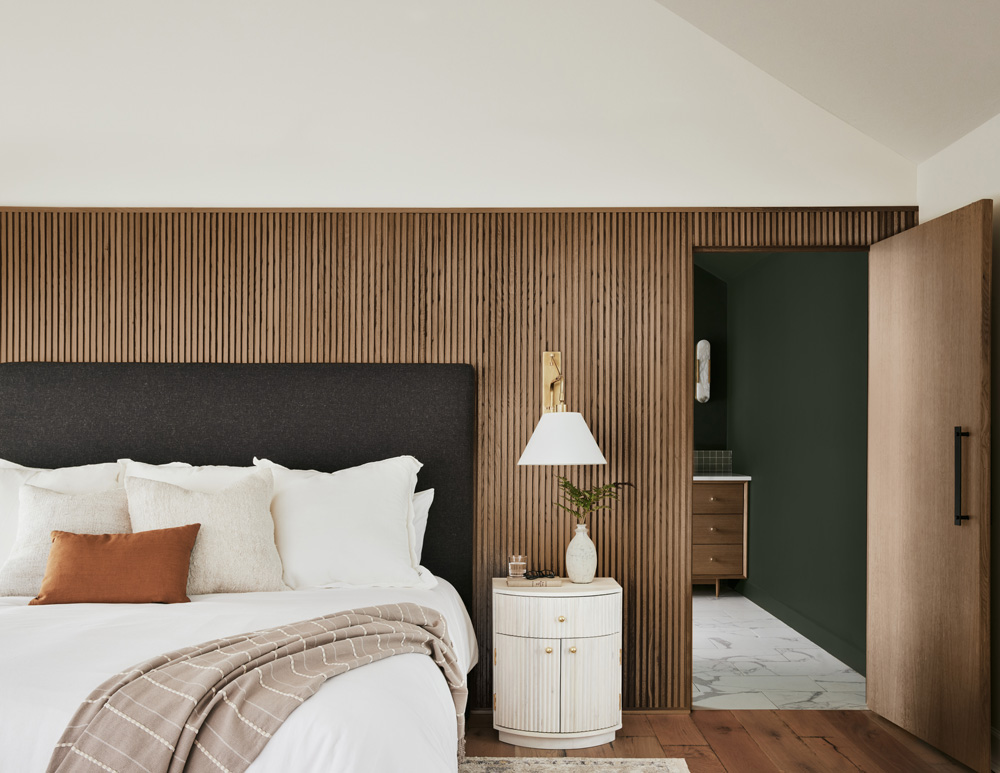
Inspired by this serene bedroom and looking for complementary colors for your own space? The curated palette below offers shades that complement and coordinate with Blanched.






–
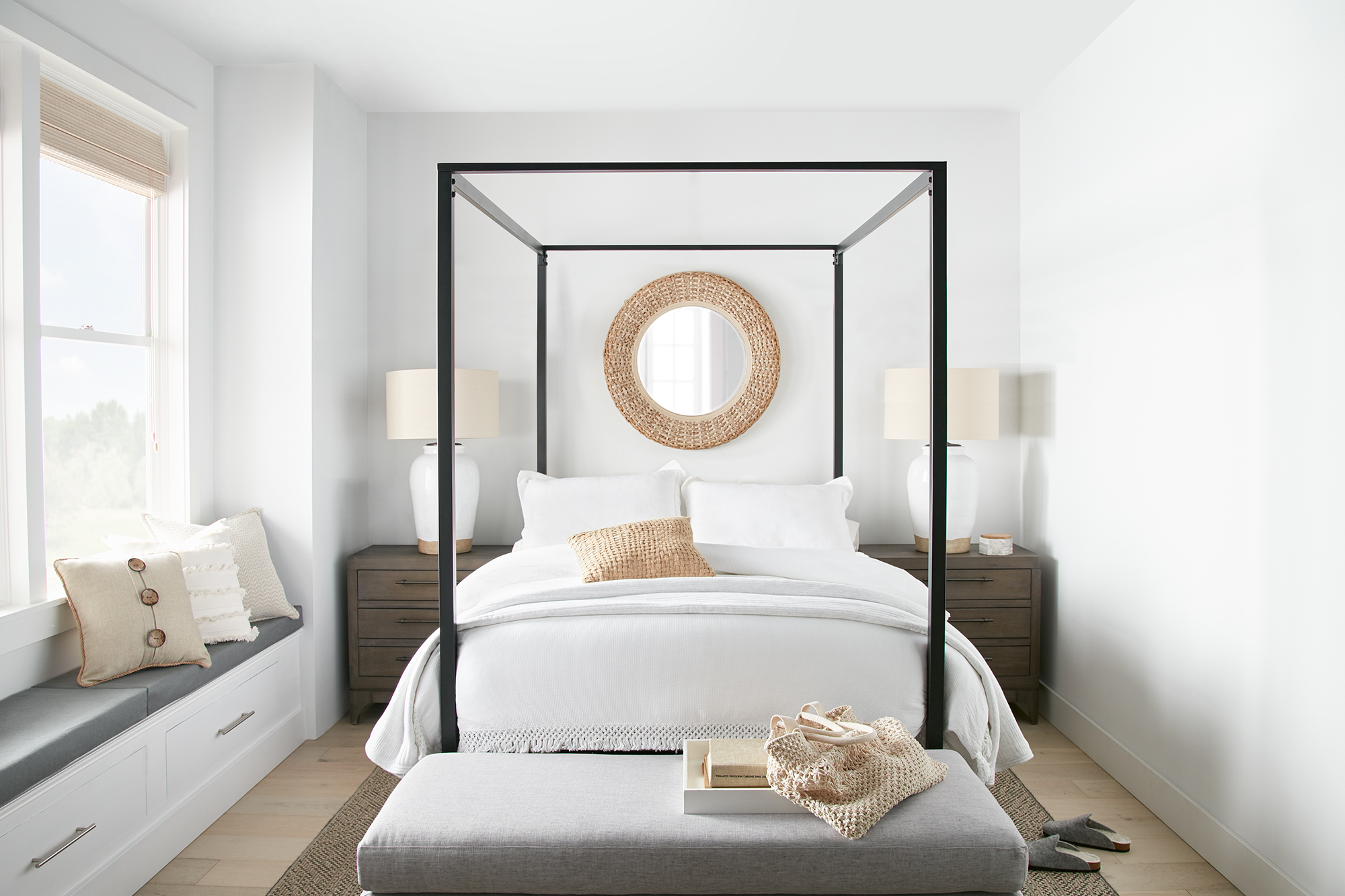
Priming Your Bedroom for Rest and Relaxation
March 16, 2022If you’ve been putting off starting a new project, you’re not alone. Winter’s increasingly shorter days can make us feel like there’s never enough time to start something new, let alone finish it. But with the arrival of spring and daylight savings, now’s the time to shift your mindset, pick up that paint brush, and get to work. We’re ready to put an end to putting things off and excited to share with you our professional tips for transforming your primary bedroom into the ultimate oasis.
As with any renovation involving a fresh coat of paint, this process starts with a primer best suited to the job. In this instance, we chose KILZ 2® All-Purpose Interior and Exterior Primer for its fast-drying, multi-surface, and stain-blocking technology, as well as its excellent adhesion, mildew resistance—great for humidity-prone homes—and sealing properties. Its ability to hide stains from rust, marker, water, and grease makes it a top choice among DIYers, and an ideal product for painting over any existing color you might have on your walls or cabinets.
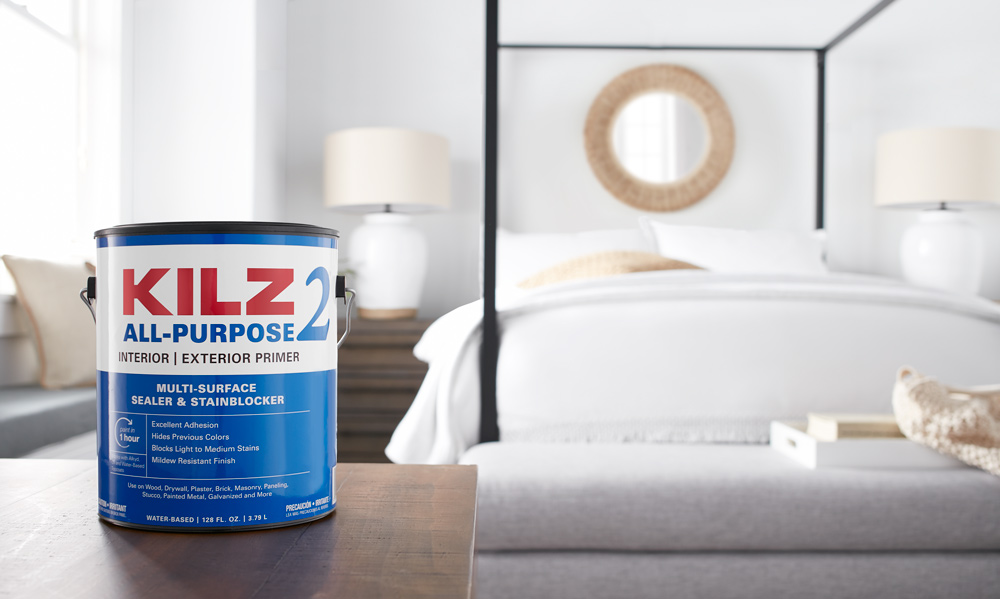
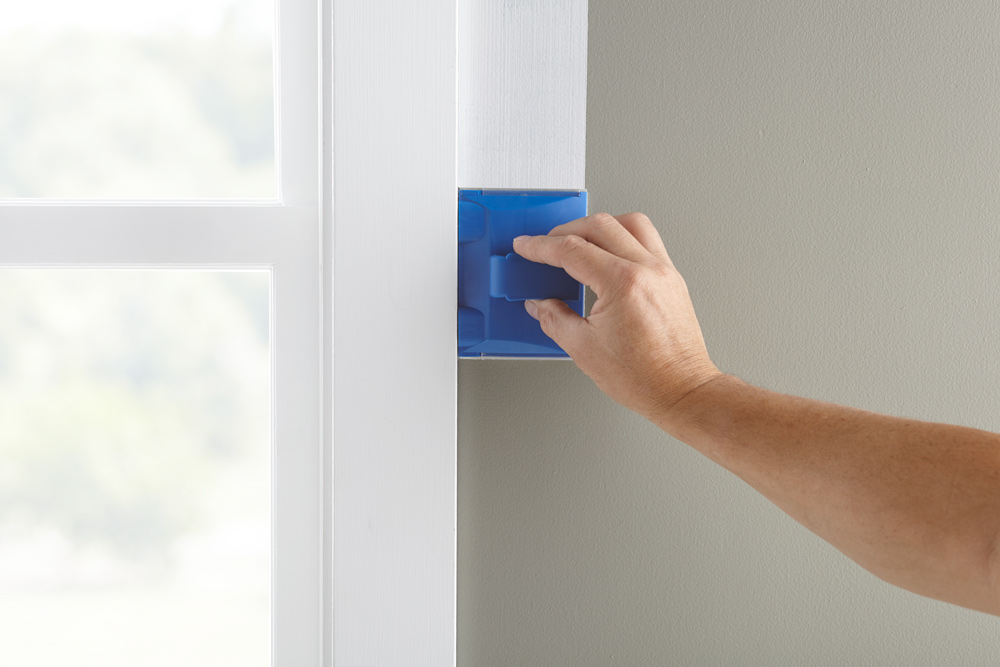
For the theme of our relaxing bedroom makeover, we chose ‘minimalist serenity,’ a purposeful contrast to the chaos often lurking outside our homes. To effectively renew the space, we painted the walls and window seat with Tribute Eggshell Ultra Bright White TB-01. This bright white paint achieves a peaceful elegance that’s, at the same time, cozy and welcoming.
To make the transformation from gray to vibrant white paint as seamless as possible, we were careful to prime thoroughly beforehand, lessening the need for multiple coats and allowing our color to shine its truest. For time and convenience, we chose to use specialty paint applicators for wall corners and window edges.
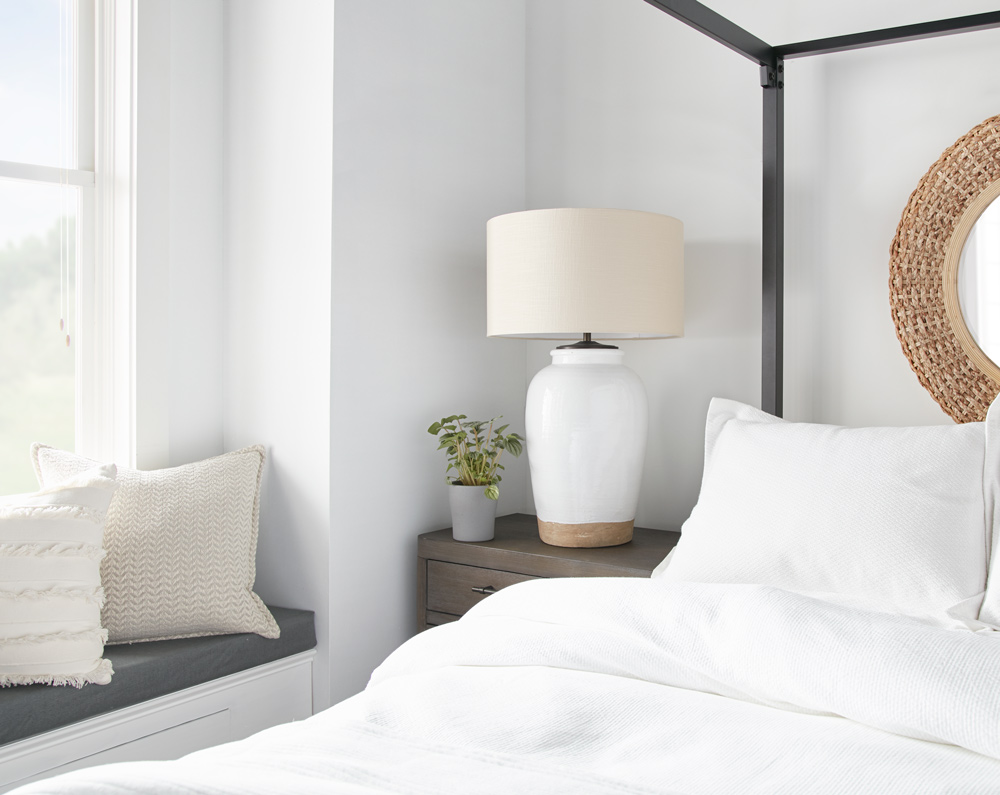
Once our walls were dry, we focused on elements of décor that would elevate the space. Our whimsical interior comes to life with subtle pops of warmth in the throw pillows, blankets, accent mirrors, and lamp bases, as well as neutral-toned furniture, which grounds the space. The black, four-poster, canopy bed frame is a beautiful accent piece and serves as the focal point of the room. An adjacent window seat provides a cozy sitting nook, and a perfect place for unwinding with a book or cup of tea before bedtime.
Transforming an ordinary bedroom into a personal haven is easy to do with the right tools and intention. For a room that feels clean, bright, and tranquil, we recommend neutral tones paired with minimalist décor, but your taste may vary. Gorgeous color that catches your eye and draws you into the space is the first step in achieving a room’s vibe, which is why it is so important to prime up top and cut out any surprises where extra time or money are concerned.
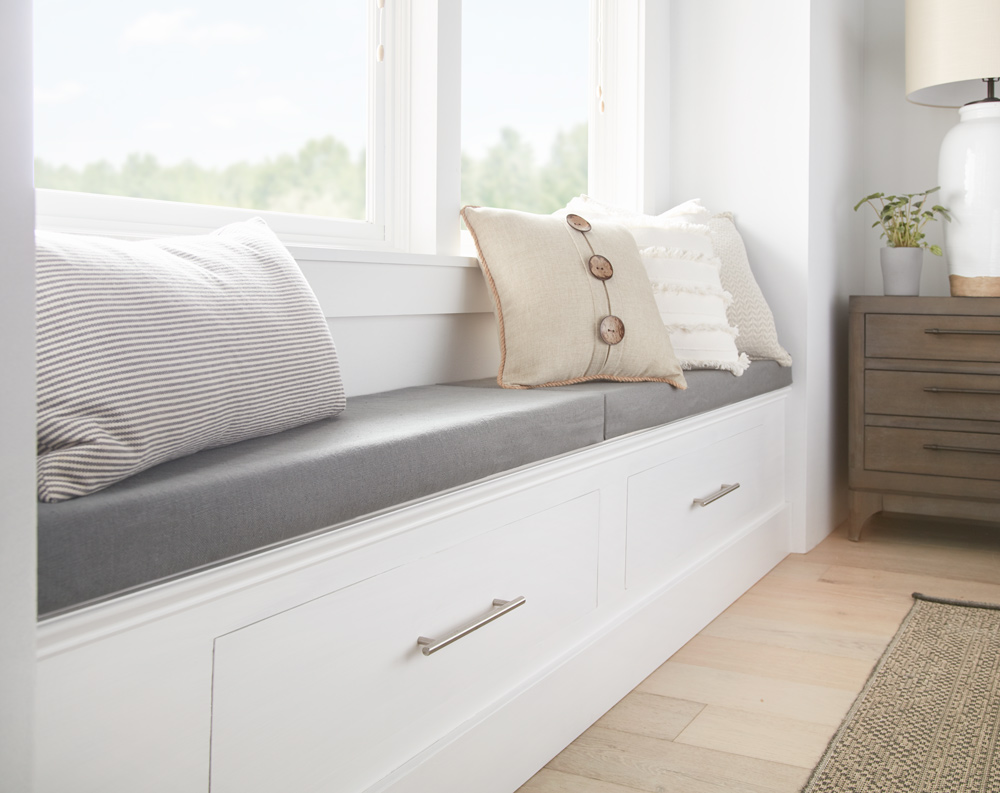
We hope our bedroom renewal motivates you to start on a makeover of your own. Once you see just how simple KILZ 2® All-Purpose Interior and Exterior Primer makes it to lay the foundation for your project, you can have confidence to start and finish quickly. And with that extra time on your hands, you can begin tackling even more things on your to-do list.
Always remember to refer to our website kilz.com or product back labels for additional information on which primer is right for your project and detailed instructions on how to apply our products. Check out our Coverage Calculator to understand your estimated paint needs for your upcoming project.
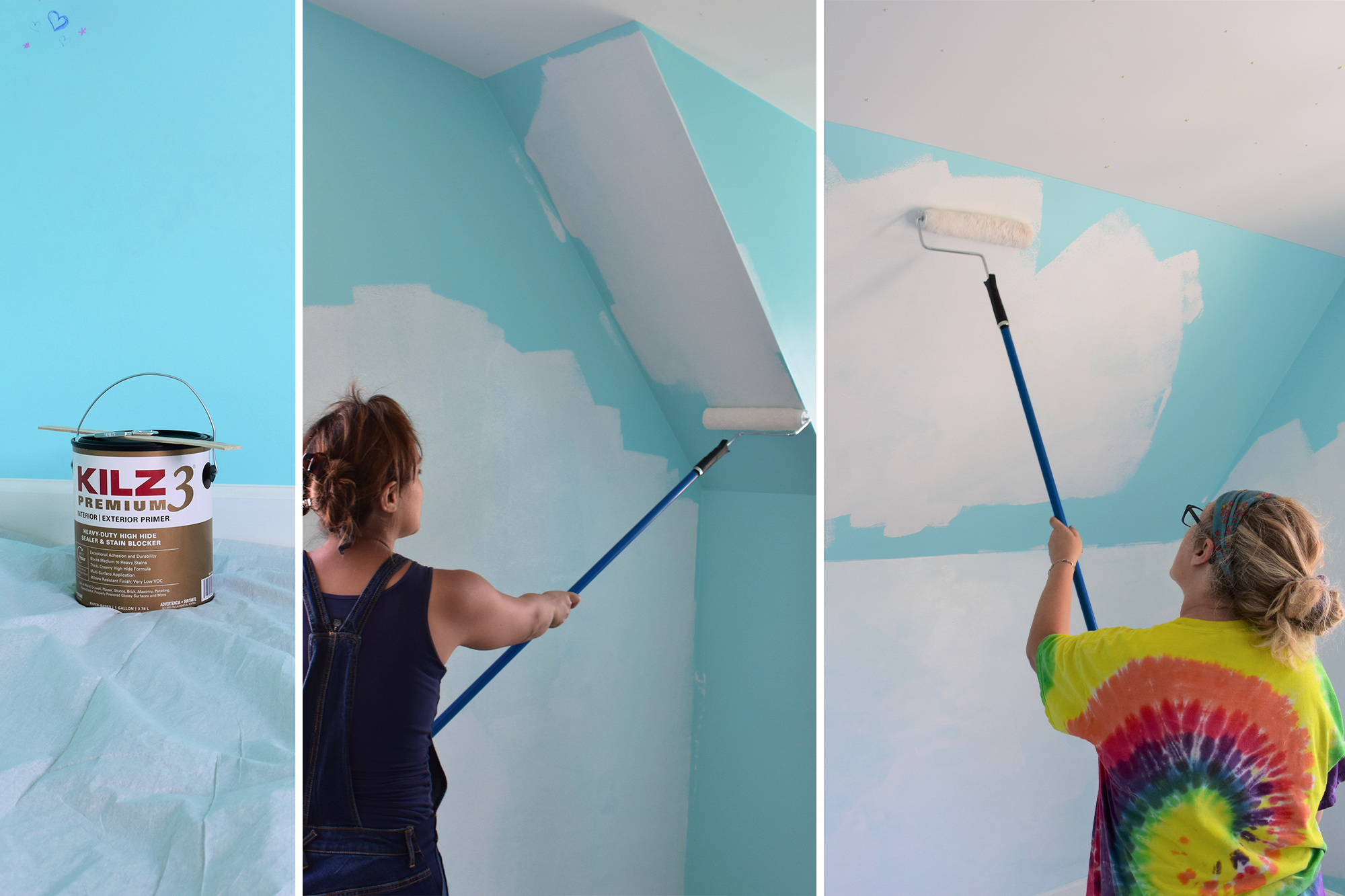
A Quick Color Change: Angela Cacace
October 18, 2021The bedroom. It’s the first space on this earth that an individual can claim as their own. There is that pivotal moment in every person’s life when they find themselves covering yesteryears’ painted walls with any cool poster or sticker they can find. And what’s left? A hodgepodge of a room that doesn’t fully reflect their newfound identity in the world as they leave their formative years and enter their tween years. With so much going on in the world today, I can only imagine what todays’ kids are having to cope with as they have navigated through this last year and a half. So as a designer and contractor for a remodeling company, I can’t think of a more deserving clientele in need of a space of refuge to call their own.
After a year of a pandemic that kept her out of school, my tenacious client, Saegan, was ready to tackle a fresh, new beginning. Excited at the prospect of finally being able to throw sleepover parties and hang out with her best girlfriends, she needed a major bedroom update. This room was going to be epic. A full reflection of the young woman she is growing up to be, I was so excited to help her find her design voice and style.
So where to begin? Few projects provide transformation in a bedroom but paramount to the small list is paint. A quick color change is exactly what this makeover so desperately needed to literally set the tone of the room.
Quite on-trend, Saegan wanted a two-tone wall, because why settle for one color when you can have two?! This technique is achieved by painting the area on the lower half of the wall (typically below standard chair rail height which is around 32”+) a different color than the upper half of the wall. This painting technique was not only beneficial in decision-making for a dynamic tween, but it was also a great choice for her dormer-walled room. Dormers are an architectural detail commonly found in the cape-cod style of home that Saegan’s family lives in. Along with a fun window nook, these types of rooms in a home boast steeply angled walls that follow the roof’s pitch. So in addition to providing visual interest, this two-tone technique worked with the shadows and angles of the walls rather than against them.
Sagean knew she wanted to paint colors that were lighter, brighter, and full of girl-power. So, after a quick field trip to the local paint store, Saegan decided on her two colors. She chose “In Bloom” and “Cement Pots” from the Magnolia Home by Joanna Gaines® Paint Collection.
Bringing your paint swatches into the space and purchasing a sample to test it out on your walls is a must. Lighting differs from house to house and room to room, so it is crucial in ensuring that you have chosen the right color. However, in Saegan’s room, this step was not so simple because there was no way the reflection of her brightly colored room was going to allow us to see the true color in her space. With bright teal paint on the existing walls and stickers and doodles abound, good prep was a must to ensure a favorable outcome.
With proper prep in mind, we purchased KILZ 3® PREMIUM primer. This is the ideal primer when you are going from a darker to lighter paint color. And in Saegan’s case, we wanted to make sure that her new softer, more mature colors showed true without having to apply multiple coats to cover up the intense teal paint. Also, this primer’s thicker high hiding formula hides surface imperfections like marker artwork! Now, having grown out of wall scribbles and sticky hands, this very low VOC, water-based primer-sealer-stain blocker provided the clean slate we needed for a fresh start.
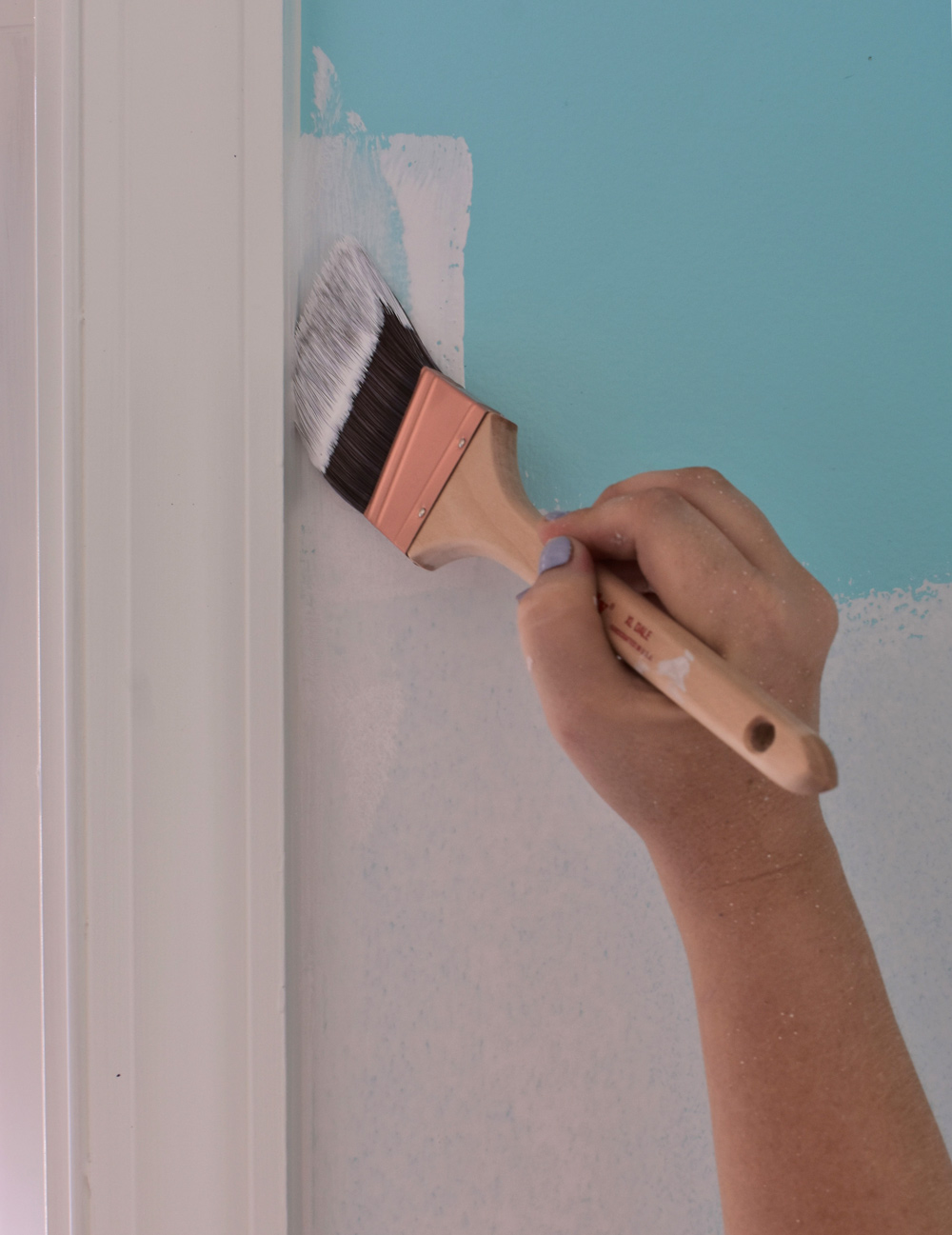
Kids’ rooms always seem to have a layer of gunk and grime, so a good wipe down of the walls is first on the list. Now, we were set to cover up years of scuff marks, stains, and “artwork”. After scraping stickers, filling holes in the wall, and removing screws and nails, we scraped off loose paint and lightly sanded it for a smooth finish. For the application, a high-quality nylon/polyester roller with a 3/8-1/2″ nap is recommended on smooth surfaces, like Saegan’s. If you are prepping a semi-rough or porous surface, you will want to go with a 1/2-3/4″ nap.
After an even primer application, we were left with a bright, clean surface that served as the perfect blank slate to begin. And best of all, it was dry to the touch in only 30 minutes, and we were ready to begin applying our new colors in an hour!
The break in the dormer walls was the perfect guide for where to separate our two colors. Using painter’s tape and a steady hand, we applied our soft color palette to the primed walls. After the addition of plenty of blush tone furniture and fabrics and gold accents, Saegan’s room transformed. Prepping the walls to ensure a beautiful finish, the two paint colors provided the perfect foundation to bring her lighter and brighter blush tween room to life.
*This is a paid partnership with Angela Cacace.
Always remember to refer to our website kilz.com or product back labels for additional information on which primer is right for your project and detailed instructions on how to apply our products.
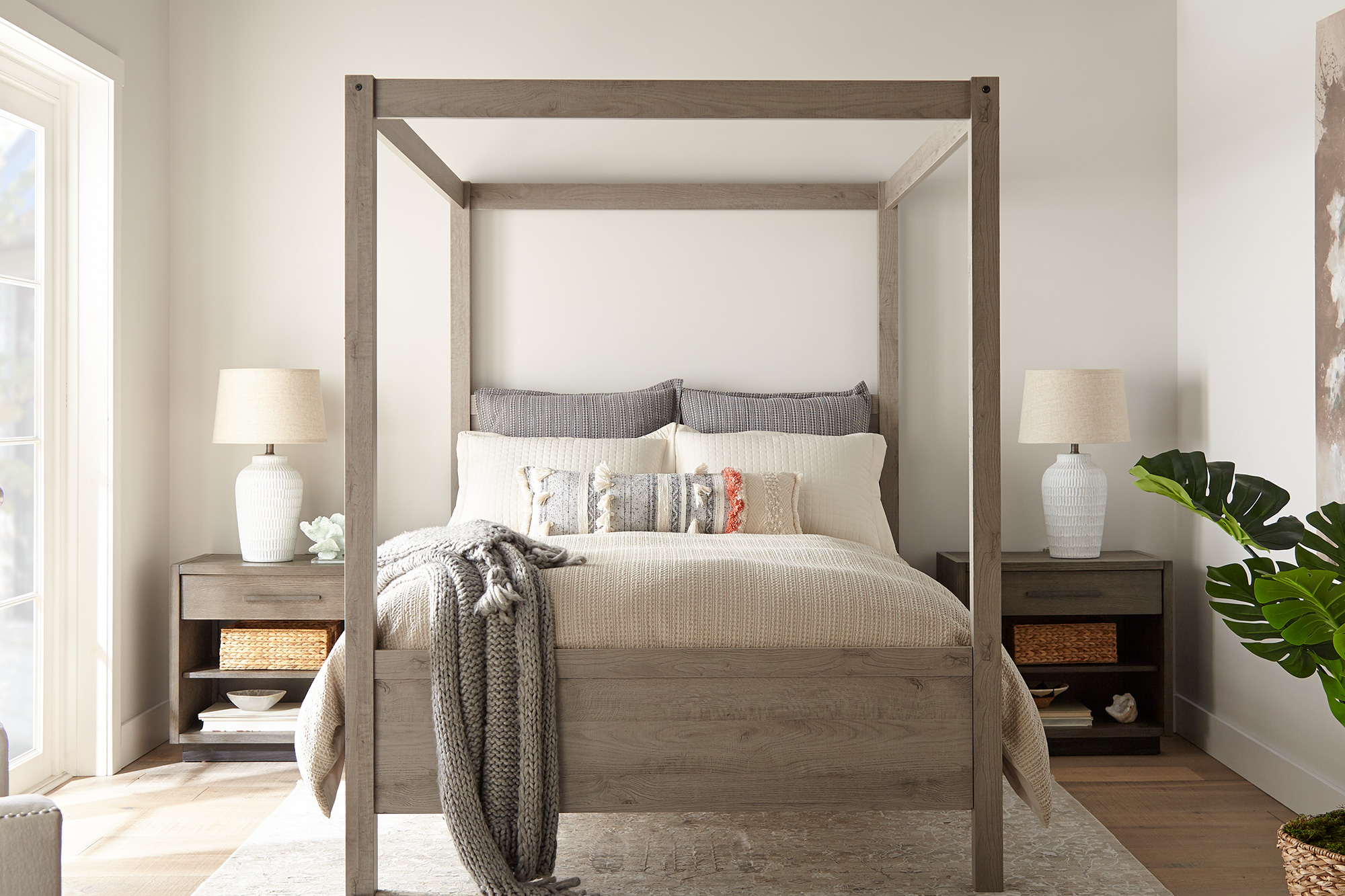
Transforming a Boring Bedroom into a Relaxing Oasis
April 8, 2021Nothing dulls the spirits more than a boring, dated bedroom design. That’s why we couldn’t wait to lift the spirits of this depressing bedroom with new colors and textures to make it sparkle with freshness.
Color has a huge impact on mood and energy levels; and especially given the stresses of the past year, it’s more important than ever to promote a healthful, stress-free atmosphere in all areas of your home — and most particularly, your bedroom. That’s why we chose creamy off-white colors that create a soothing atmosphere of calm and relaxation, while opening up the space visually so it doesn’t feel as stuffy and confined.

We began our project with the most valuable tools for any DIY makeover — primer and a coat of paint. For this makeover, we chose KILZ 3® Premium Primer, which did an amazing job of covering the old, drab olive-green paint and creating the perfect foundation for the new fresh white paint. KILZ 3 Premium Primer offers excellent adhesion and durability, allowing the new paint to glide on smoothly and adding to the longevity of your paint job.
Next, we added a coat of KILZ® Tribute® Paint in Collector’s White (TB-31). This is a creamy, barely-there white with subtle undertones of greige (gray/beige) to take the brightness down a notch, making it ideal for reflecting the sunlight filtering in from the glass doors in this master bedroom. Because of its cool undertones, we were able to use Collector’s White throughout the entire bedroom, creating a soothing, gently glimmering sparkle without a hint of harshness.
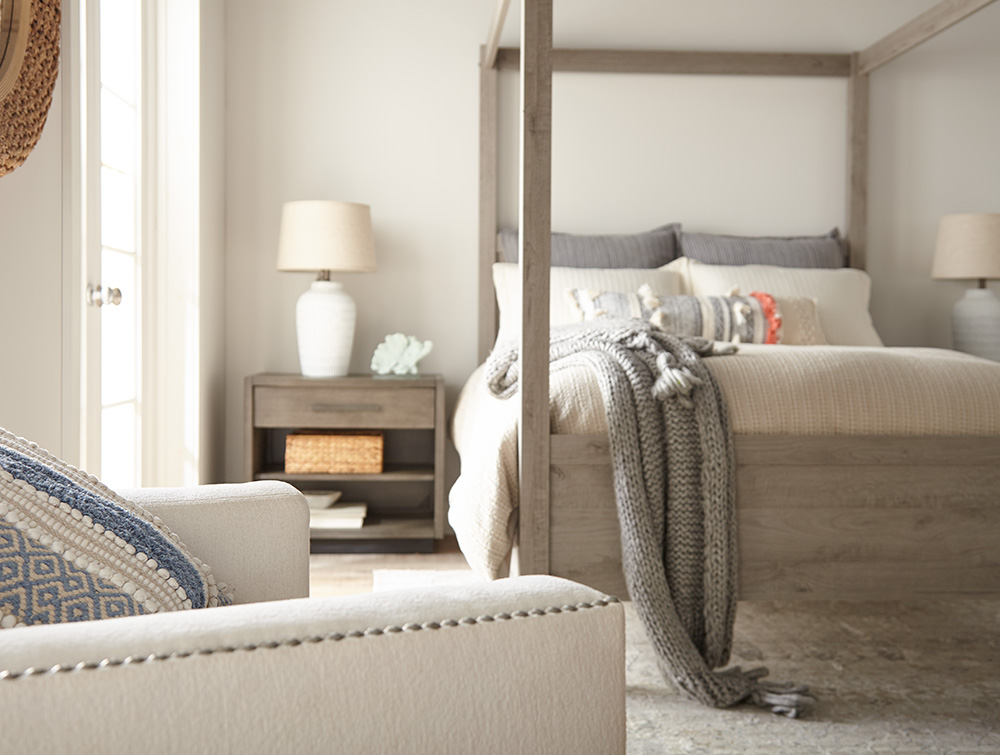
Our keynotes for this makeover were airy, simple, calm and relaxing, and we accomplished these with a streamlined Contemporary Swedish-Meets-Coastal California theme. For the focal point, we chose a modern four-poster bed in gray-toned brown natural wood. We added matching lacquered wood bedtables in a similar brown/gray shade, styled in keeping with our Scandinavian/Danish Modern theme.
We kept the attractive, natural hardwood floor, but added a cozy off-white rug. Other furnishings and accessories — including an armchair, lamps and bedding — were chosen to reflect the creamy white of the walls.
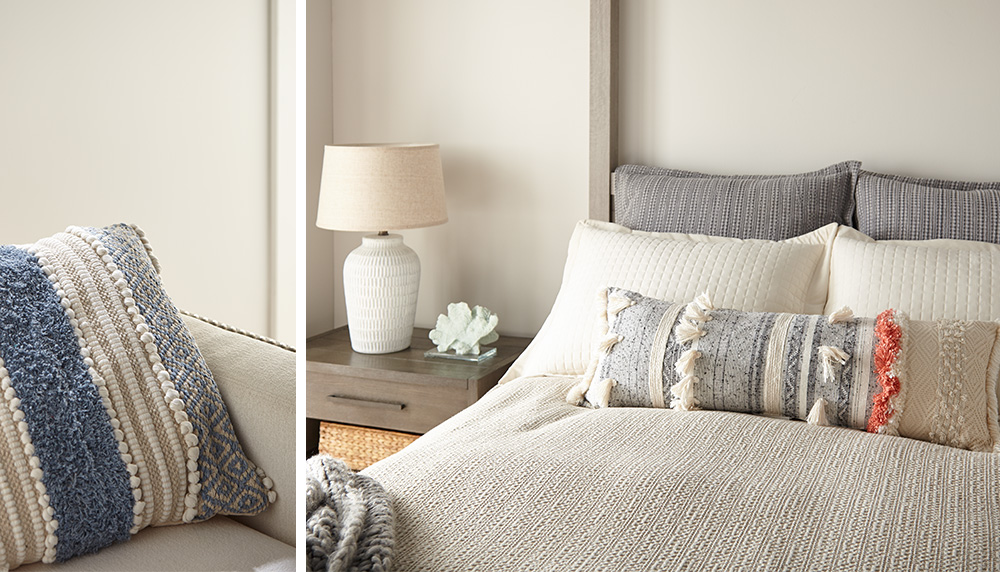
One interior designer’s tip: Pillows and other textiles are a great, affordable way to underscore your design scheme. We choose plump, oversized woven natural-fiber pillows in shades to tone in with the rest of the room, with handcrafted touches such as pom-poms and fringe. We finished the look with two attractive white ceramic lamps, styled in the Danish Modern tradition and topped with pale ecru linen shades.
The overall look is one of natural textures — crisp linens and woven cottons — giving this master bedroom a clean, fresh, inviting look of soothing freshness. When coupled with the bright sunlight filtering in from the glass doors, the impression is of a gleaming, glistening oasis for rest and relaxation — the kind of ambience you would look for in a luxury spa or hotel. And with quality primer and paint, the good news is that this pristine, fresh clean look can be easy to maintain as well.
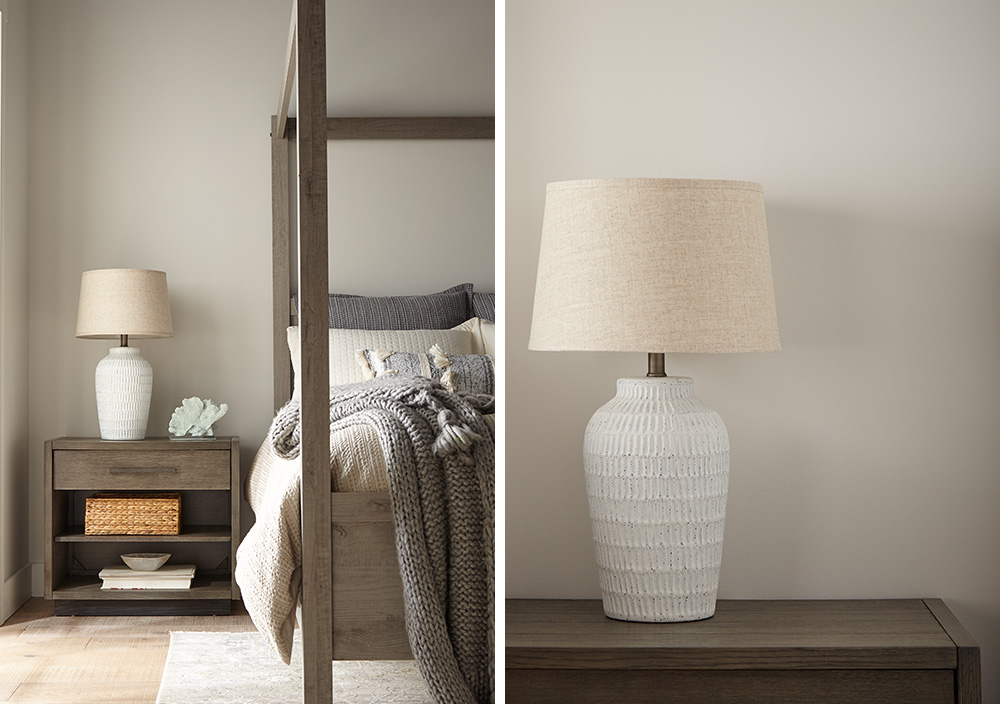
Anyone can achieve a room transformation like this at an affordable price. The key is to choose colors that reflect the mood and ambience you want to create — whether it’s light and airy or warm and nostalgic. That’s why paint and primer are your greatest tools in any DIY makeover. They’re not only affordable, but they’re also so easy to apply that even a newbie can do it without any help, and with spectacular results.
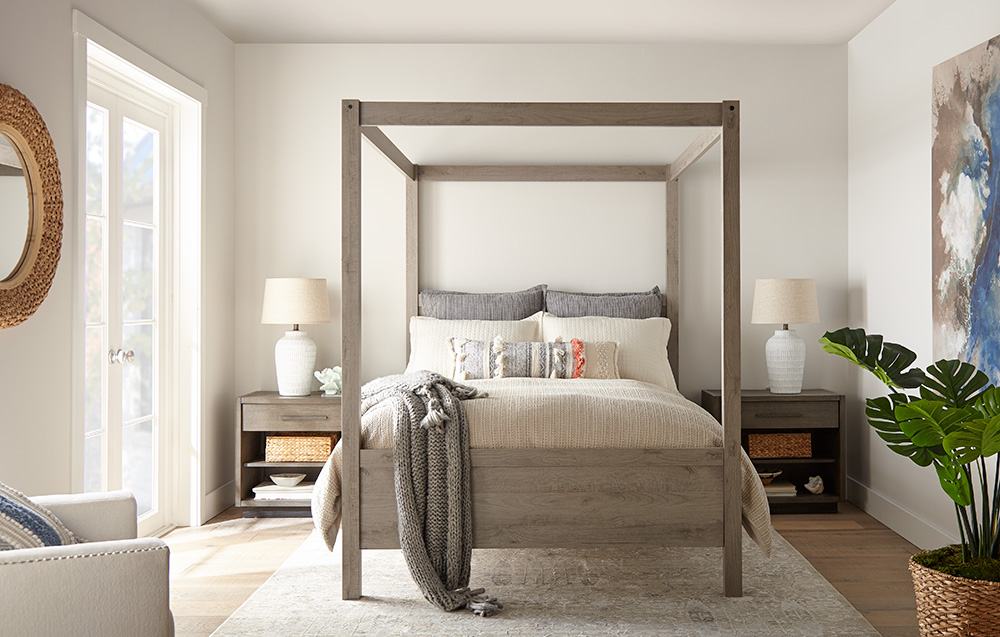
With primer and a coat of paint, you can transform a dull, outdated room into a showplace. The primer will enhance all your painted surfaces, while protecting them from household dust, dirt and mildew. Likewise, a fresh coat of paint will lift a room into a new dimension of beauty and vibrancy. Just add a few pieces of furniture and accessories within your budget — and voila! You’ve created an affordable, elegant room makeover that will stimulate your sense of color and beauty, while relaxing your mind and spirits.
Always remember to refer to our website kilz.com or product back labels for additional information on which primer is right for your project and detailed instructions on how to apply our products.
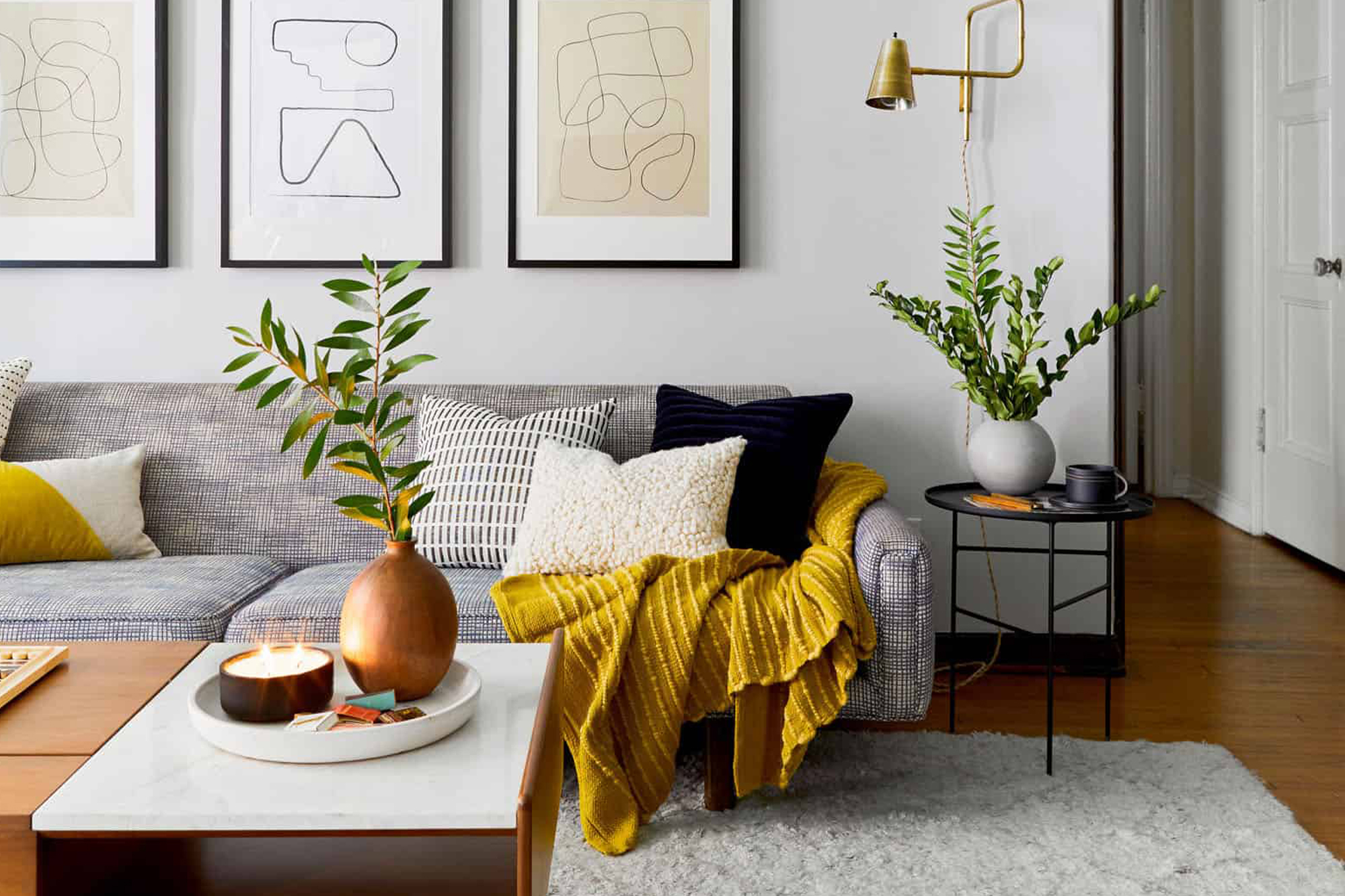
Smart Spaces with Emily Henderson
February 19, 2021One of the biggest design “trends” we’re seeing as we move into this new year is multi-functional spaces. We put “” around the word trends, simply because while we are seeing plenty of beautiful multi-purpose spaces pop-up, the trigger for these transformations is often an essential need. The need for a place to log on to your zoom calls that isn’t your couch or kitchen island, the need for kiddos to have a place to do their schoolwork that doesn’t devour the dining room table, and even the need to have a place for some peace and quiet (meditation corner anyone?) since the local yoga studio is still closed.
Functional spaces are key to thriving in 2021, so why not make them beautiful too! One of our favorite interior designers and great friend of the KILZ® Brand, Emily Henderson, is a true pro when it comes to designing spaces that not only look amazing but work hard to meet her client’s needs. And like any seasoned designer, Emily knows that proper prep work is essential to professional quality results for every project both large and small. We sat down with Emily to get her tips and tricks for creating multi-functional spaces, learn how she properly preps her projects and get a sneak peek at a home office reveal she’s currently overseeing.
Hi Emily! We’re so excited to have you on the blog today. You’ve been a KILZ fan for some time, can you share what you love most about KILZ and why you trust KILZ products for your own projects and for your clients?
Hiya, thank you! A couple things: first – and I think this is the biggest one – it’s just a huge time saver. And it emboldens us to take more risks. And lastly, I guess it’s just a good, functional product. I can elaborate!
I think it’s a pretty commonly shared opinion that painting is the most affordable, most impactful thing you can do to change the look of the space. I agree with that! But if you want to make sure that your paint job actually looks good, you’re going to want a great blank canvas behind it. KILZ is the brand that all of our painting contractors use to prime our spaces, so there was a default level of trust there already – if you’re ever on a construction site before paint goes up, I’m sure you’ll see tubs of KILZ everywhere – but they use it because it makes their lives easier. Walls are smoother, paint sticks better, some of the primers even have mold- or mildew-fighting properties. (We used one of those primers in our windowless basement bathroom.) Instead of schlopping on coat after coat of paint and hoping for even coverage, it’s nice when you can just prime and then roll out two coats.
But also, it’s fun to have KILZ in your back pocket. My team in particular has been able to go crazy with paint in their apartments – you know, like green trim in the bedroom or purple stripes in the bathroom, but done tastefully! – with the knowledge that they’ll be able to change it back easily when they move out without losing their security deposit. We are genuinely big fans.
What’s one project in particular that you couldn’t have completed without KILZ? And which primer did you use?
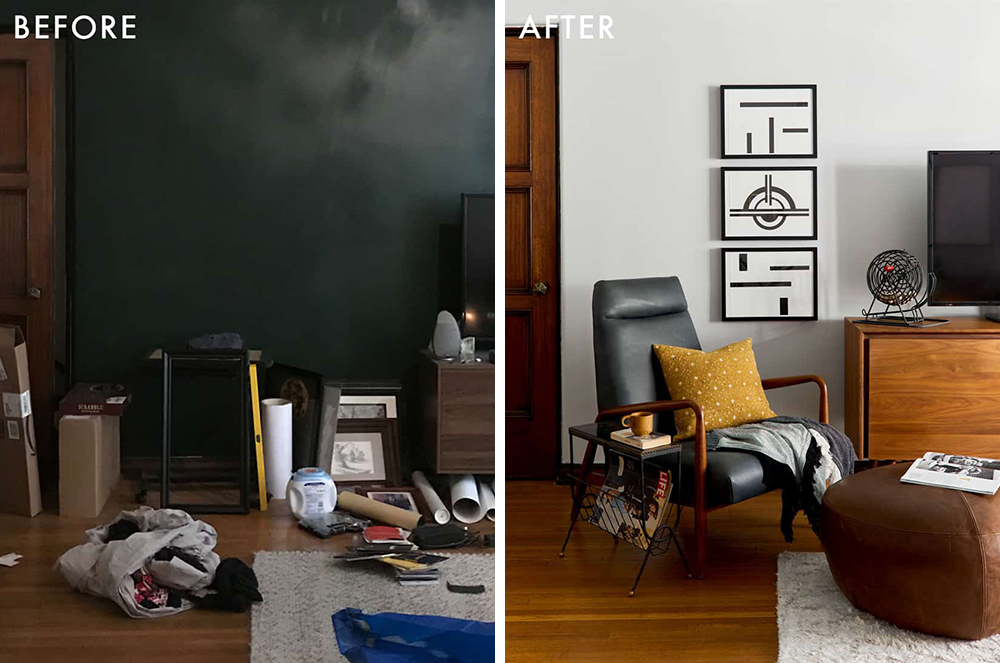
Oh boy, where do I begin? Top of mind would be this living room that my team, lead by Julie Rose, just finished. It was in a historical LA building, right off the first-floor courtyard, and it was dripping with charm…but that black accent wall wasn’t doing any favors. It was just bumming us out. There was only one window in the space, which faced into the heart of the building, and it just made the room feel dark and depressed.
There were a couple problems in the space that we all deal with – not a ton of storage, a pass through layout, you know, the classics – but the main one was really that this wall was overshadowing everything in the space…literally. So we settled on painting the whole space, including the trim, in ‘Chalk Gray,’ brought out our painting contractor and he primed the whole wall in under half an hour – our photographer, Sara Tramp, had popped in to grab progress shots and he had already almost finished by the time she was set up and ready to go.
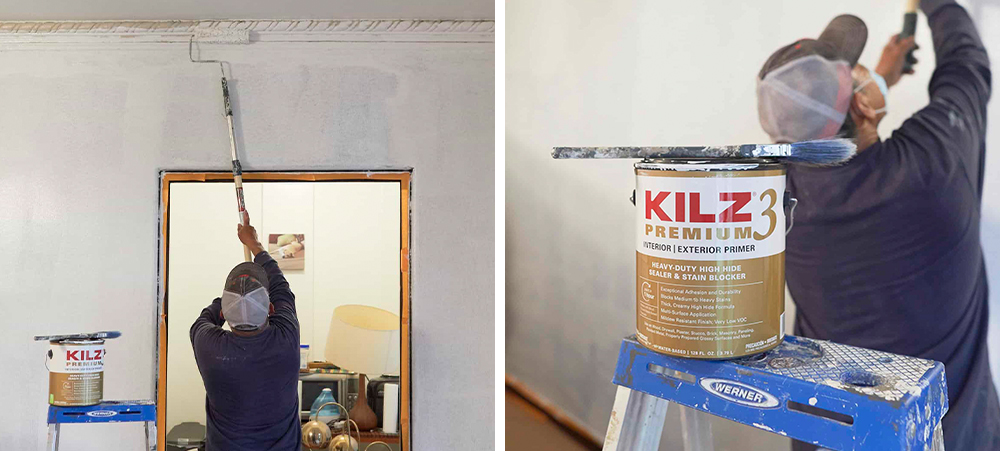
Those photos were taken after one coat. One coat! Do you know how long that would have taken to cover up with just white paint? We ended up priming every wall in the apartment so we’d have a nice, even base and a clean backdrop for our new gray walls and by the time we finished, it was such a beautiful space. The before and afters were staggering. It was like we had breathed new life into the architectural details – once everything had been cleaned up, you could finally see the beautiful moulding and the warm wooden details actually stood out. I’m so proud of how this one turned out.
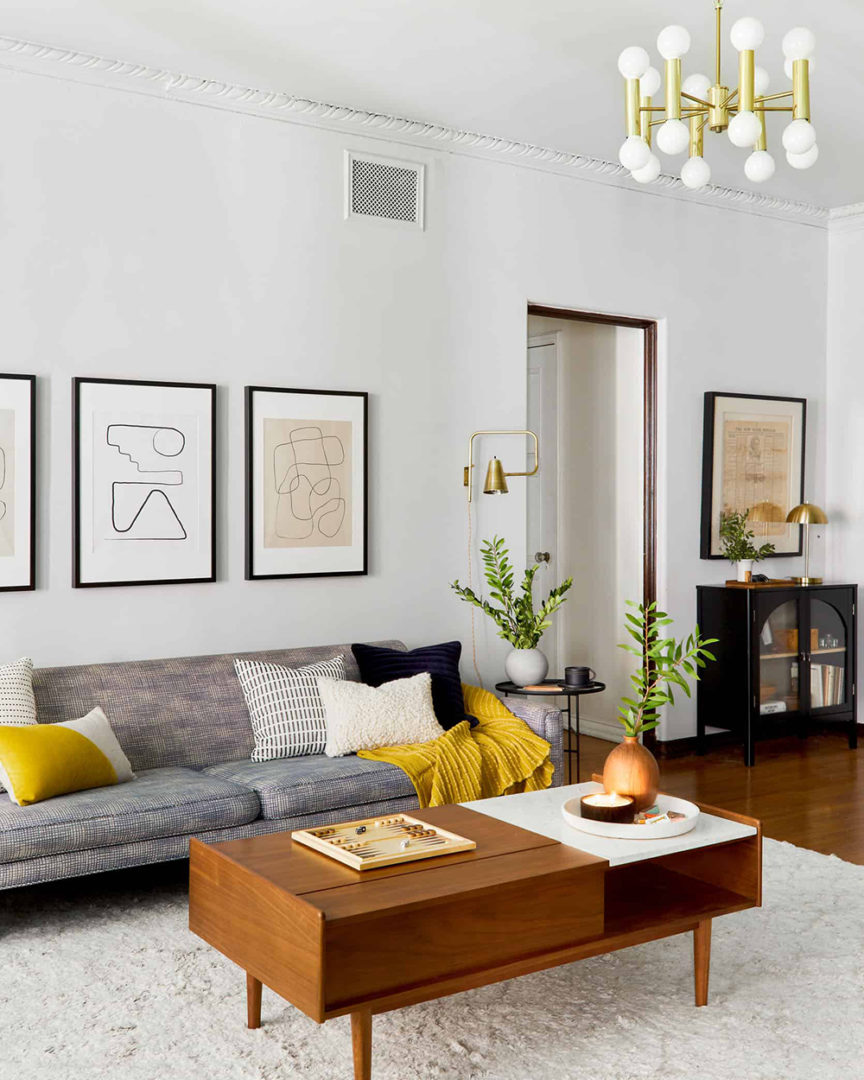
Now let’s talk about prep. What is your advice for a novice DIYer looking to take on a painting project? How much time should they allocate to prep and what steps should they absolutely not skip?
If you’re painting the whole room, take the time to do it right. Sure, you can change paint, but not in the same way that you can swap out a throw pillow or blanket. Before doing anything else, I’d recommend taking 10 minutes to look around and to find and fill all your tiny nail holes or hairline cracks. If you ignore these things and paint straight over them, your eye is going to be drawn straight to them every time you walk in.
My team is split on the value of painter’s tape – actually, my photographer recently painted all of her closet trim freehand after installing a gorgeous wallpaper, out of fear that any tape would pull it off – so I think that if you have a pretty steady hand and a couple of baby wipes, you should feel free to go proceed without taping. You can also throw down drop cloths and make sure to move all your furniture out or to push it to the middle of the room and cover it!
From there, I’d recommend jumping straight into priming. For an average sized room – let’s say 11’ x 12’ – it should take about an hour or two, plus it’ll save you a ton of time on the back end, since you won’t need to paint as many coats to achieve vibrant coverage. The whole process, from filling holes to moving pieces to priming, shouldn’t take more than half a day and it’s definitely worth it.
Like we mentioned in the intro, you’re a true pro when it comes to designing multi-functional spaces. What are the key things you consider when presented with a project to create a room that will meet various needs?
Wow, thank you! There are three big questions to ask: who is using the space? What are the functional requirements? And how do you want it to feel?
For example, a multi-functional space shared exclusively by children, like a playroom or a homework room, and a multi-functional space that needs to work for the whole family, like a rec room, need to be designed differently. A room for kids will have softer pieces to abate the potential for injuries, more open floor space to encourage play, more nooks for alone time, etc. whereas you may float more pieces in a whole family space to encourage smaller zones for each task at hand.
Once you’ve nailed down who is using the space and what it’s for, the most important thing to figure out is how you want it to feel. Try to pick a few words that describe the vibe you’re going for. On my team, some favorites recently have been “warm grandpa library,” “bright art deco discotec,” and “moody old world restaurant.” Picking how you want it to feel when you walk in will really help dictate pieces, layout, and will remove a layer of design analysis paralysis that I think we all struggle with occasionally.
Home offices are by far one of the most popular spaces we’re seeing people DIY. What is your favorite office project you’ve completed recently? (And did you use primer?!)
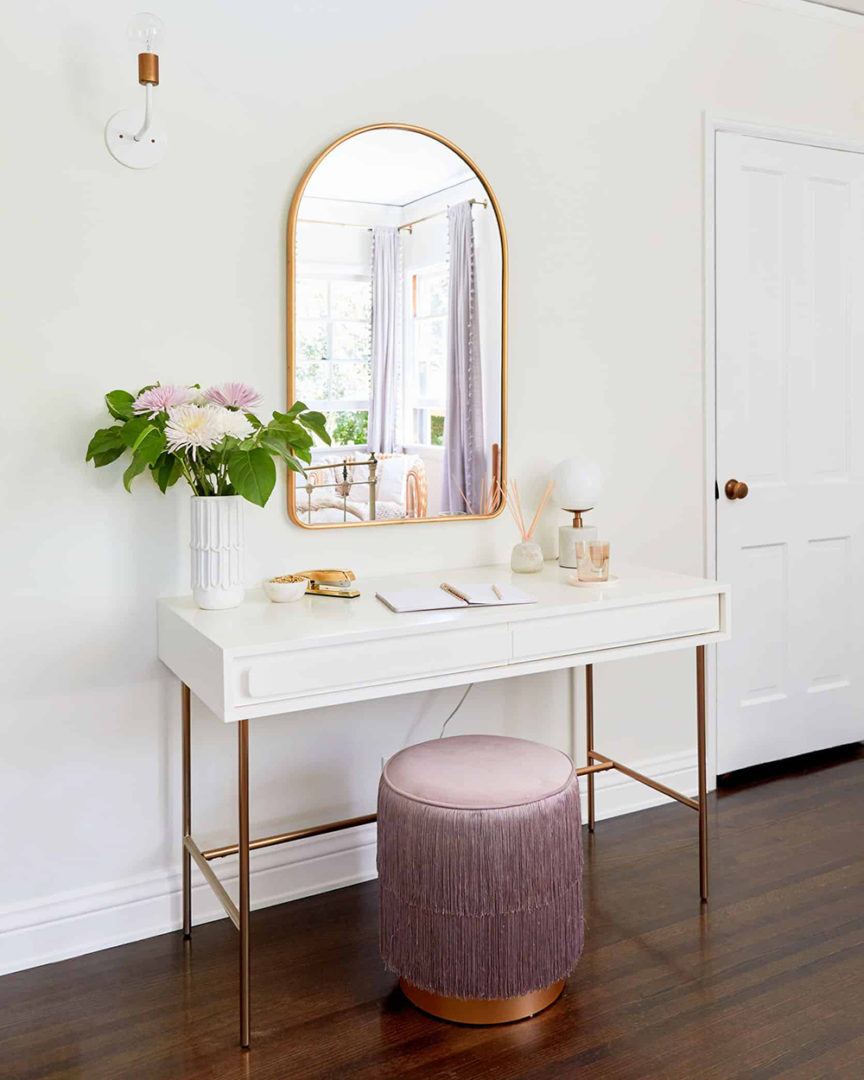
Did we use primer? You jest. Of course we did! My team, again led by Julie Rose, recently finished this teenager’s bedroom makeover, which obviously had to include a multifunctional office space for some homeschooling. I actually designed this space about a decade ago, so it was thrilling to be able to work on its update.
We ended up choosing this vanity in particular because of its size and storage – it wasn’t too heavy for the space and it can pull double duty as the perfect sized desk for a high school student who’s currently just learning from her laptop.
I guess that rolls into my main tips for folks looking to build an office or WFH space. Look for pieces that can serve a few purposes that you’ll still want to look at after you’ve returned to work or school. If you’re able to, try to grab a desk that’s the appropriate scale for your room. This one is a great size for a teen, though I know that some adults will need more space and closed storage. Finally – and the tip I love the most, as a stylist – see how you can accessorize your WFH or homeschooling space to make it feel a little less sterile. The mirror above this desk in question is across from the windows, so in addition to being a great place to get ready in the morning – there’s a cabinet with closed storage in the room, too, in case you’re wondering where the non-school products are kept – it also does a great job of bouncing light around the room.
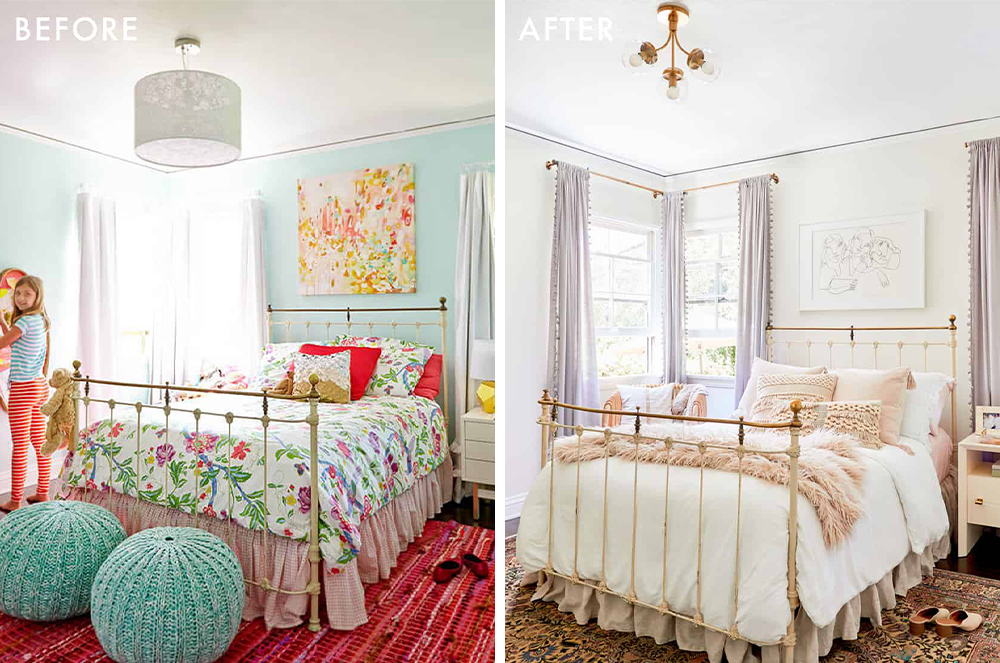
You know I couldn’t leave without a paint transformation photo. Just such a bright, happy, serene bedroom and homeschool space!
One of the biggest woes of a home-office-lacking DIYer is that they just don’t have space for an office. What creative hacks or solutions have you seen to create an office in a small or unique space?
OH BOY. Let me tell you about the project we’re working on right now with one of my favorite new designers, Keyanna Bowen! She’s figured out an incredible way to separate her space and I can’t wait to see it all finished.
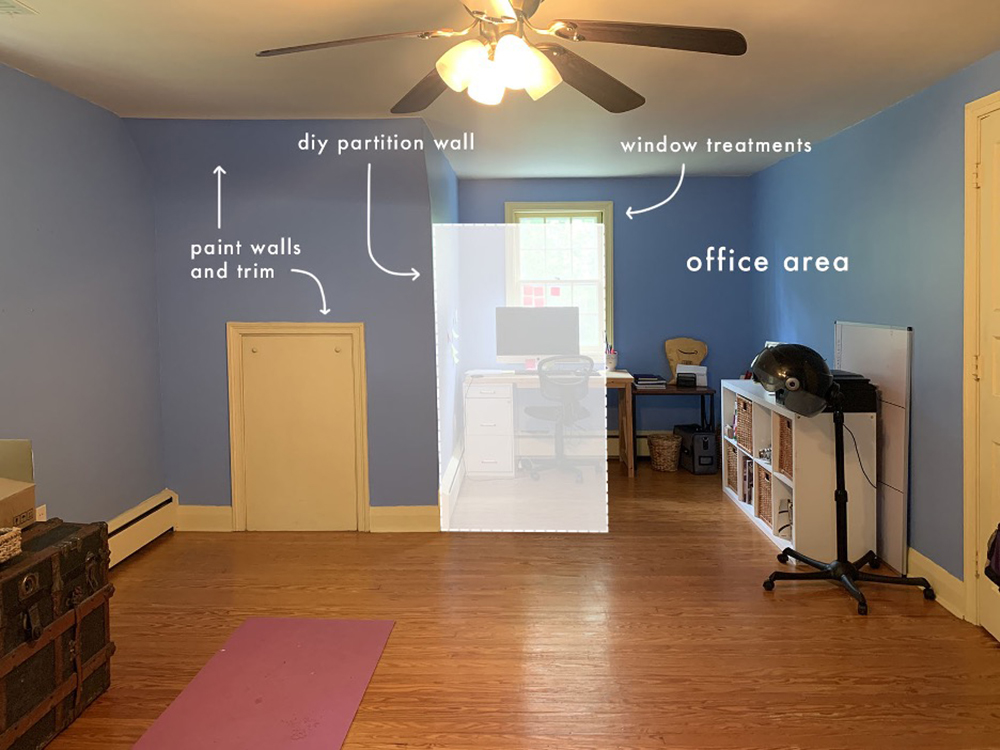
Here’s where we’re starting from. Beautiful! Just kidding – there’s obviously a ton of charm in this room, but it just needs a little bit of a boost. Keyanna wants this space to still serve as a guest room and as a yoga space, so we can’t go all-in on just decking it out as an office. I’m sure that’s a problem most folks at home are familiar with, too! Key’s plan, though, is awesome: she’s planning on building a rope wall partition. A rope wall partition! It’ll hang from the ceiling and it will still let in light while defining the office as its own separate space.
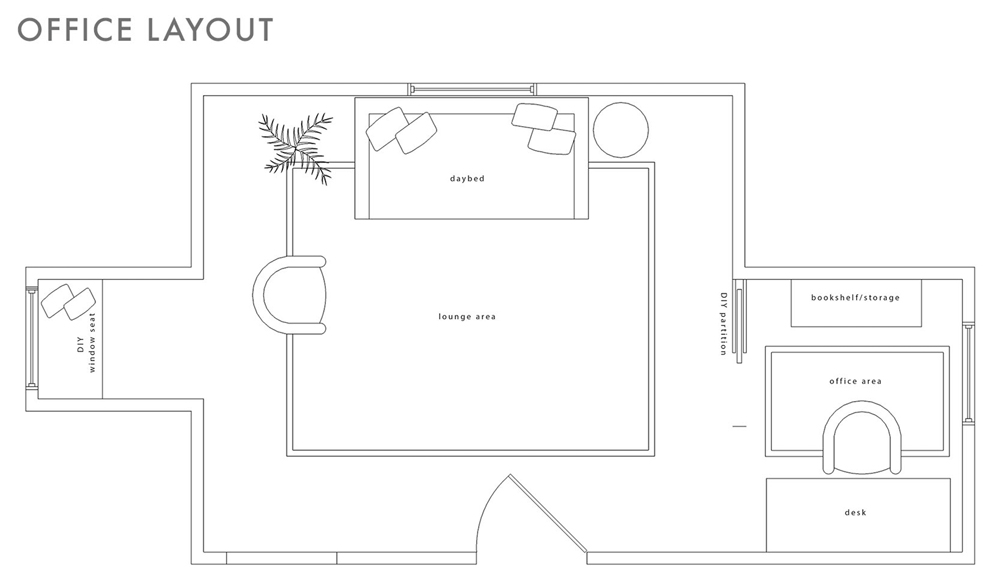
Over the past year, I think my favorite WFH spaces or DIY offices have been the ones where folks have turned their closet into a whole desk setup (long live the cloffice!) or folks who, like Key, have figured out a functional way to use a previously-awkward nook. I’m so inspired! If you aren’t blessed by architecture, though, the idea still stands: is there a way to carve out a corner of your home with privacy screens? Can you hang a similar partition in your living room to give the illusion of a separate workspace? The possibilities are endless.
A word we hear a lot when talking about multi-functional room design is zoning. Can you share what exactly that is and some tips to do it right?
I love a zone! I talked about it a little earlier, but it’s really about figuring out how to clearly define the different functions that take place in each part of a room. The best part: it’s very easy to do! You can set up separate zones in minutes by anchoring areas with different rugs. Key does it beautifully above, with the office and lounge areas both being really clearly defined by their rugs. It makes total sense, because when our brains see different flooring, they think, “oh, different room.”
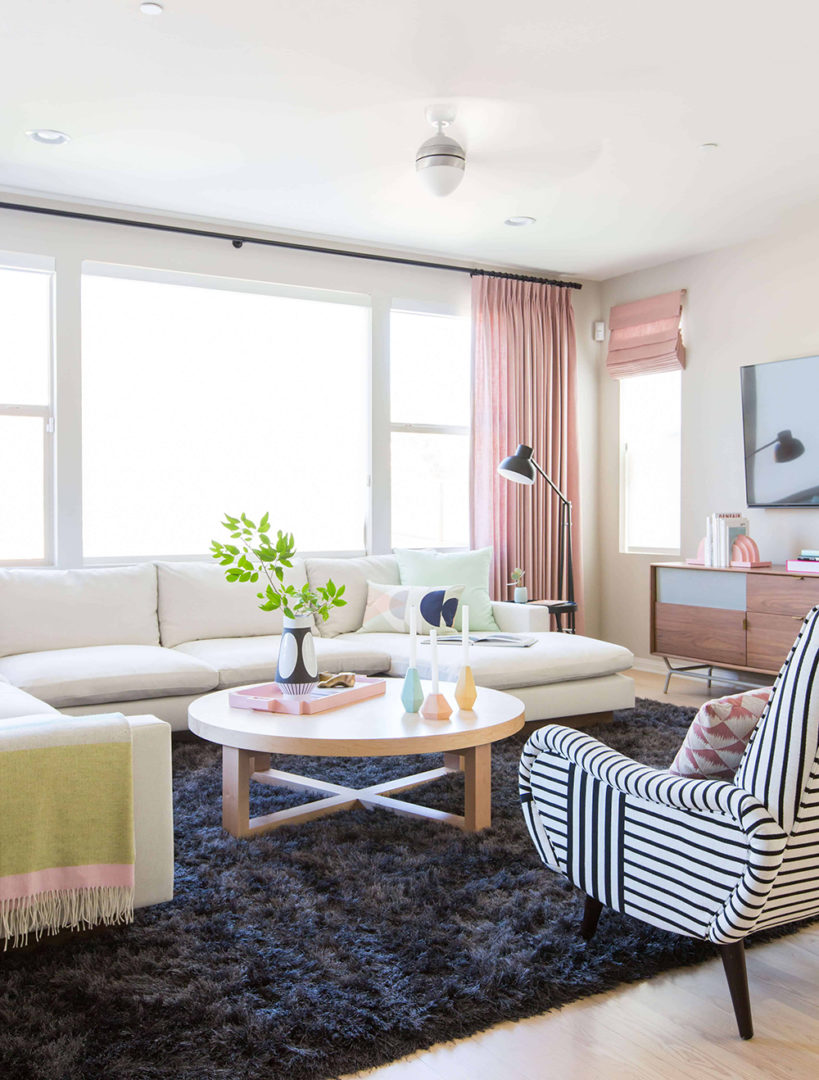
Zoning is really essential for folks with open concept layouts – especially now! So in this project – from 2016, oh my gosh, though it’s still one of my all-time favorites – we created a huge and comfortable family room by flanking this super-soft rug with a huge, u-shaped sectional and two graphic chairs. It’s bright and open, but still definitively its own space.
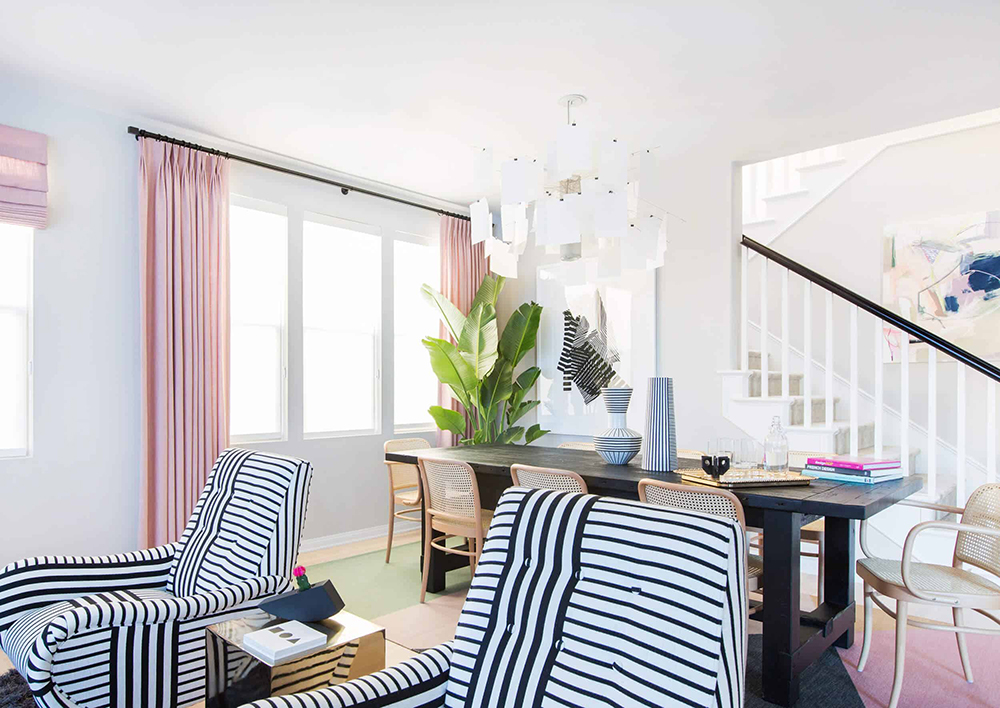
A few feet away, and anchored by a flat, easily-cleanable dhurrie rug, is the dining area. You’ll probably notice a lot of repeating elements: graphic hits of black and white, light woods, and pastels. Keeping a cohesive color palette isn’t always necessary – I am all for exploring, playing, and getting weird – but it does make the design process easier and it’ll make your rooms feel more relaxed and comfortable.
Switching gears to home-school rooms and kid’s study spaces. What was the biggest hurdle in creating a functional space for little ones?
Making spaces so that kids will actually use them! I think that a lot of the time, design-minded people like myself can get really hung-up on the vision. We want to make something beautiful and impressive and worth sharing, but kids don’t necessarily share those same motivations. They just want a fun place to play, learn, and explore.
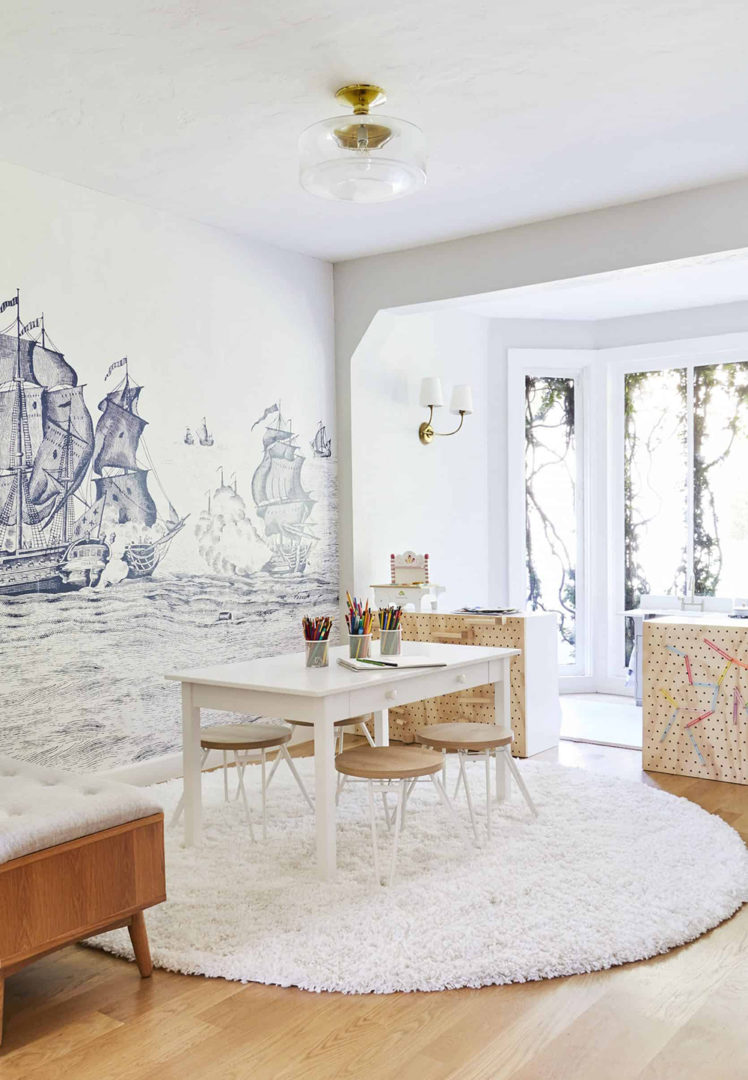
The playroom is actually the space I struggle with most. My kids are still very young – 5 and 7 – so we’re early in the homeschool process, but they love art and playing with legos, so once I chose to design for those two hobbies in particular, it immediately became more functional and the kids used the space way more.
To that end, I’d ask: what do your kids like doing? How does your child actually study or do homework? If they love drawing, give them a space for that and relinquish your dreams of them ever actually wanting to play with the enormous dollhouse you bought in the hopes that you could play with it together. (Speaking to myself, here.) If you build it, with your kids and their specific tastes and interests in mind, they will come.
Can you share a recent personal or client projects you’ve done that included a room for kids? And of course, we want to know how primer came into play!
I’m in love with this room that my team, again led by Julie Rose (are you sensing a theme here?), recently completed for a little girl. We wanted to make a magical bedroom with a specialty art area and I think we really made it sing.
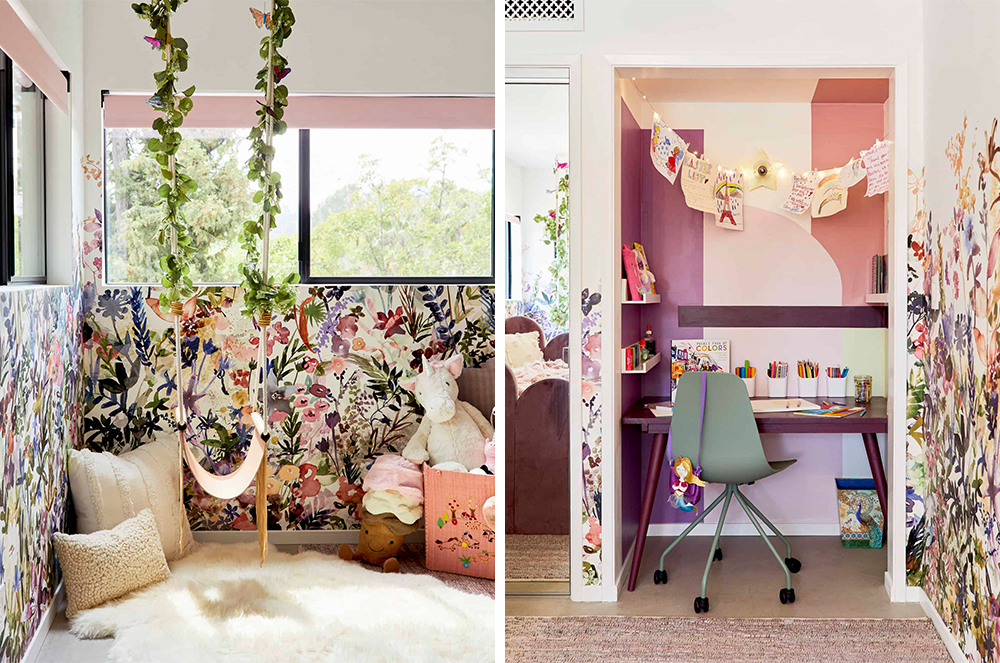
As for how we used primer – it went everywhere! We actually primed underneath the wallpaper, per our installer’s recommendation. It covered up the previous paint and served as a plain backdrop so that the white pieces of wallpaper would appear clean and fresh, but it also worked as a bit of a barrier so that the wallpaper paste didn’t bond with the walls too much. While wallpaper is pretty permanent, priming first can make the removal process a bit less painful in that you won’t need to worry about ripping off chunks of drywall by accident.
We also obviously had to prime that art nook so that all of our magical, fairy-inspired colors would show up. We love the way it turned out and so did the family.
Before we wrap up, let’s talk about the project that we’ve partnered with you on… that also includes your design mentee Key! Can you tell us about her, the project and give us any sneak peeks?
Woops, I guess I already spilled the beans a little bit on this one, but I’d love to talk more about Key! Earlier this year, my team and I decided to take on a mentee – I’ve been so incredibly fortunate to find success in this field and I’m now surrounded by people who are experts in editorial and social and more, so I wanted to share the wealth and hopefully, help more folks find long-term career stability in this weird world of internet design and influencing.
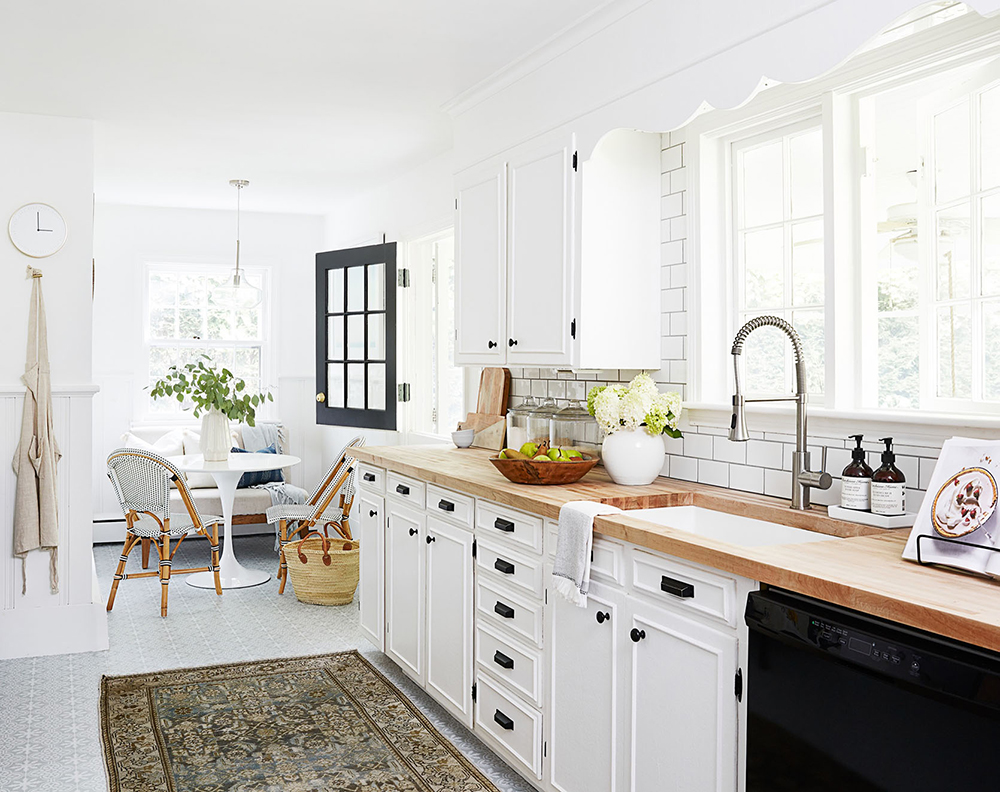
Key was an instant, unanimous pick from the team. She’s an incredible interior photographer in her own right, but we knew once we read her writing and peeked at her own DIY rental renovations – that’s her kitchen above – that she would be the next big thing. She’s warm and creative but she’s also detail-oriented with a perfectionist mindset, which is what it takes to make and shoot and share beautiful spaces for the internet!
We’ll be making her office over – the periwinkle one I shared above – and we’re so excited to work with KILZ because it’s actually covered in oil-based paint, which you can’t cover without using a specialty primer. We’ll have an official update in a few weeks, but I can share the general design direction which is going to knock your socks off…
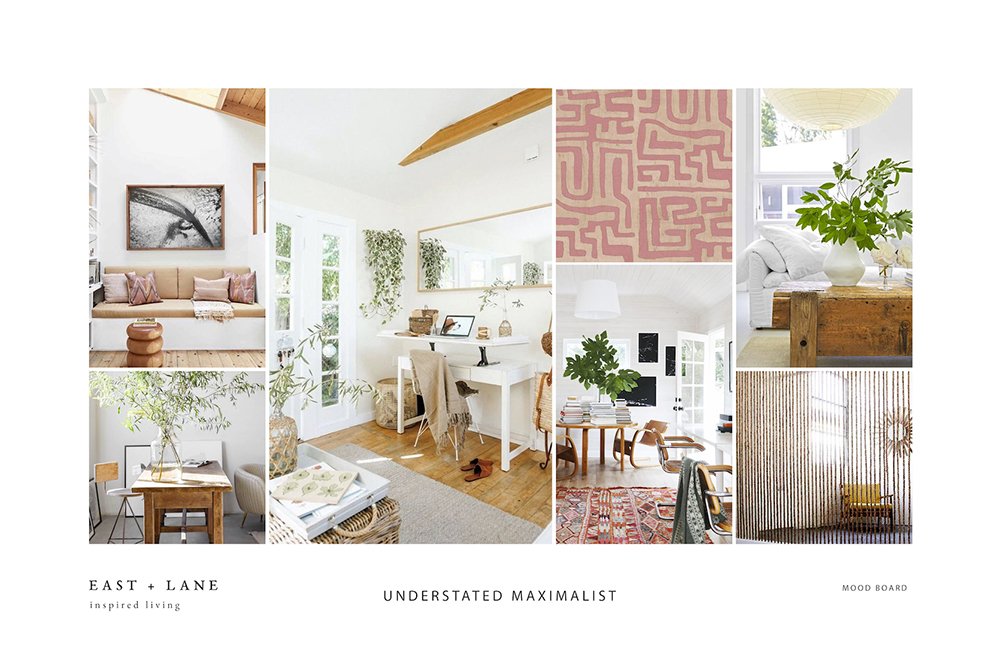
My team and I have been working with Key to secure all the main furniture pieces and BOY, they’re great. (Also, do you see that rope wall partition on the bottom right? It’s so good, isn’t it?) I know it’s only February, but I have a feeling that this is going to be one of our top makeovers of the year. We’re so thrilled to reveal it to you all and so grateful that KILZ has given us the opportunity to work on such a fun project, together. Cheers to beautiful and multifunctional rooms in 2021!
Author is paid sponsor of KILZ Primer. Always remember to refer to our website kilz.com or product back labels for additional information on which primer is right for your project and detailed instructions on how to apply our products.
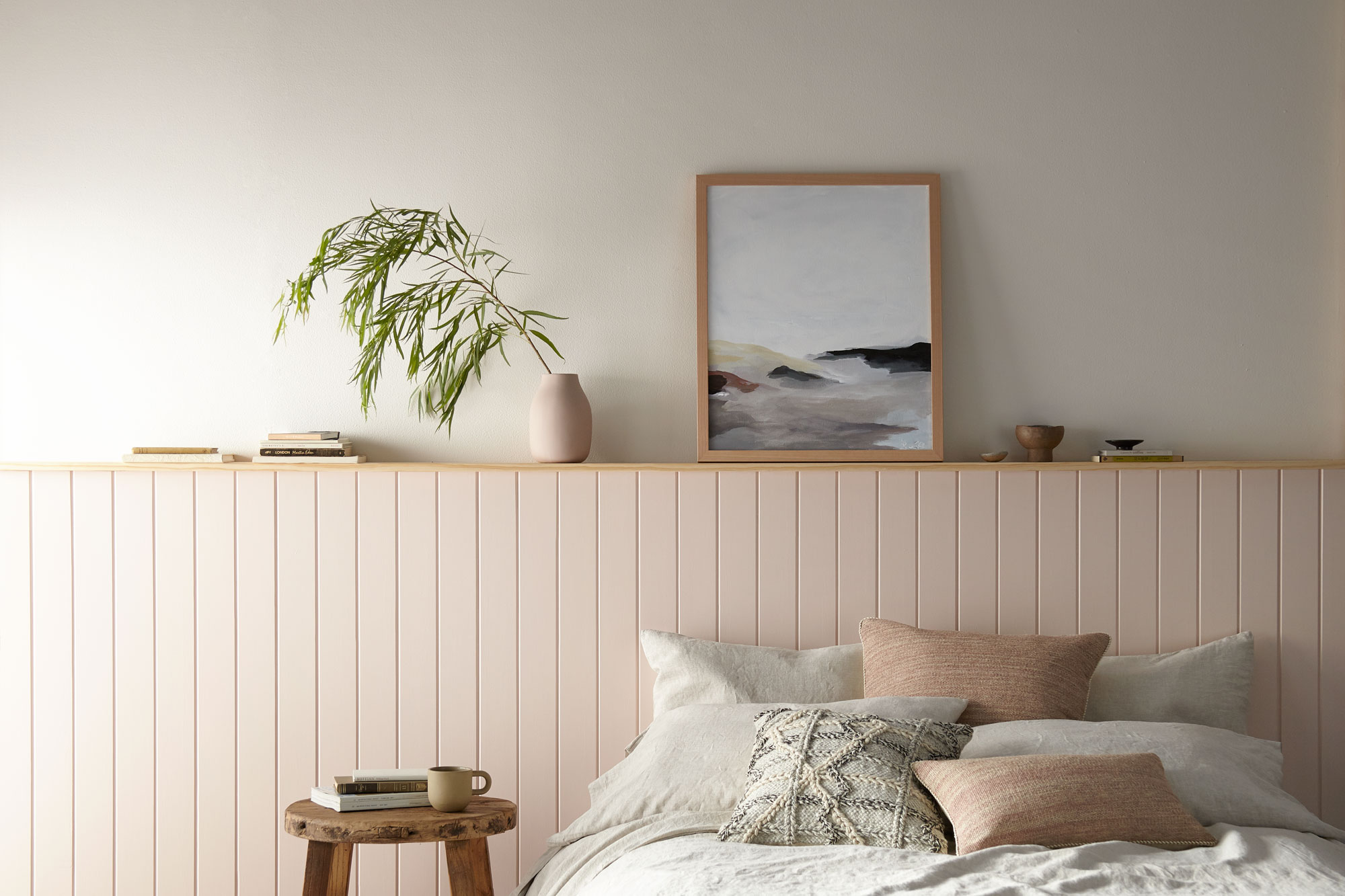
Magnolia Home: Relaxing Rose-Hued Bedroom
January 14, 2021If you think pink walls are just for children, this rose-hued bedroom painted in coordinating shades from Magnolia Home by Joanna Gaines® paint line just might make you reconsider. Soft and neutral, the two-toned pink walls give this bedroom a modern yet relaxed feel that is perfectly complemented by the room’s light wood floors. Nature-inspired accents and understated bedding complete the space.
“These muted, rosy colors add an airiness to the room that is beautifully drawn out by the natural light pouring in.” – Joanna Gaines
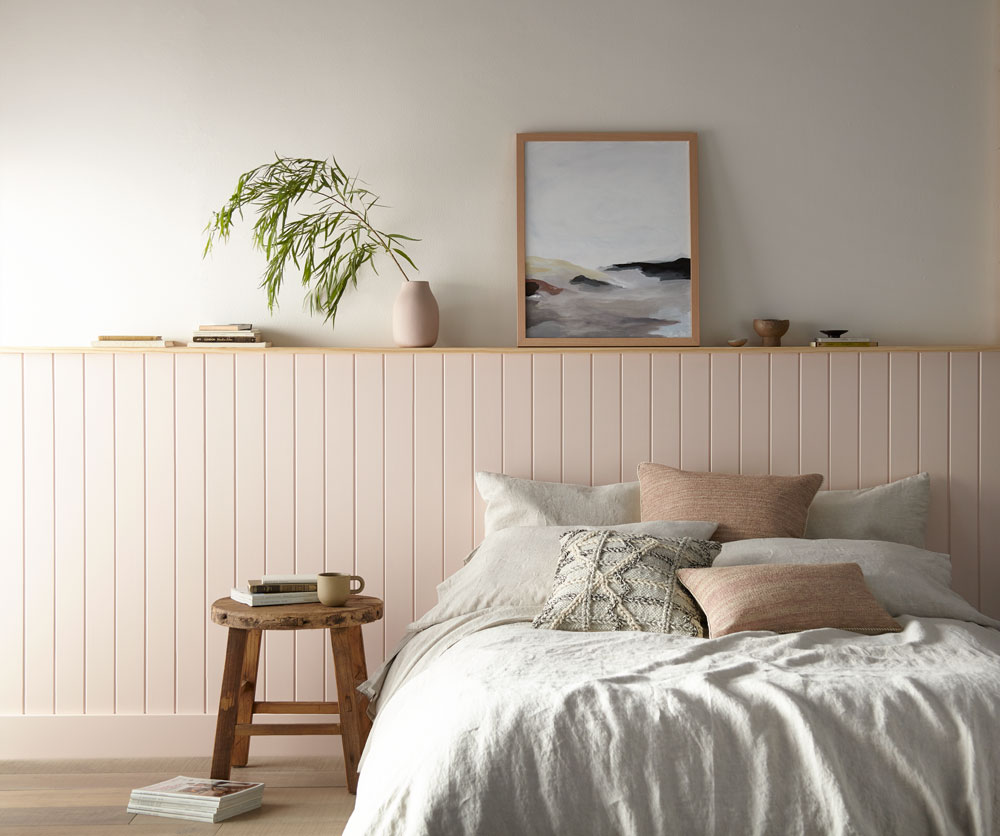
If you’re considering adding a pop of pink to your own home, the two timeless shades in this room are a great place to start! The vertical skinny-lap wall is painted in Ella Rose, a classic pale pink that will forever be in style. This particular pink is one of 25 colors in the Market Collection, a palette personally crafted by Joanna Gaines. The coordinating, whisper-pink paint on the top wall is Antique Rose. Another hue from the Market Collection, Antique Rose is a delicate ivory shade dusted with pink and yellow.
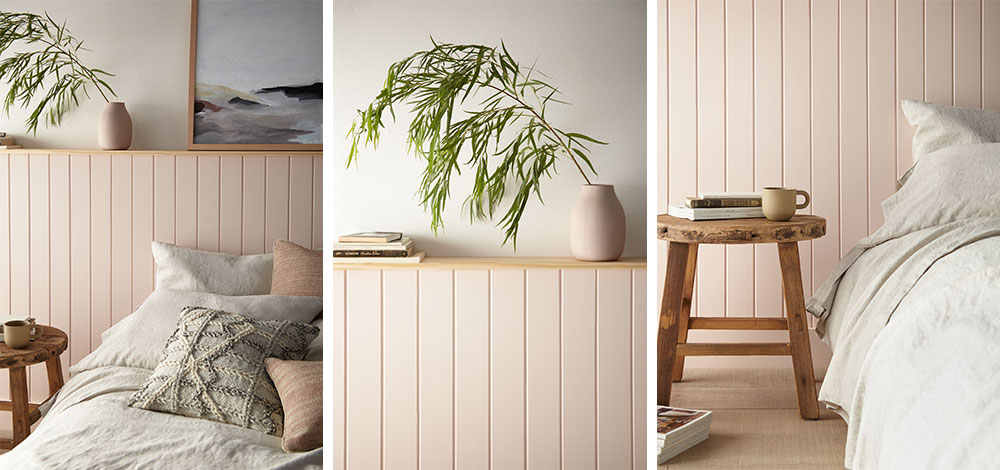
Magnolia Home by Joanna Gaines paint line includes 150 timeless colors curated by Joanna, making it easy to find a shade that’s perfect for your home. And if you love the colors featured in this bedroom, you’re sure to love the palette of six colors below that was created around these pretty pink hues.
Magnolia Home by Joanna Gaines paint is available at select Ace Hardware store locations, and online at AceHardware.com and Magnolia.com.
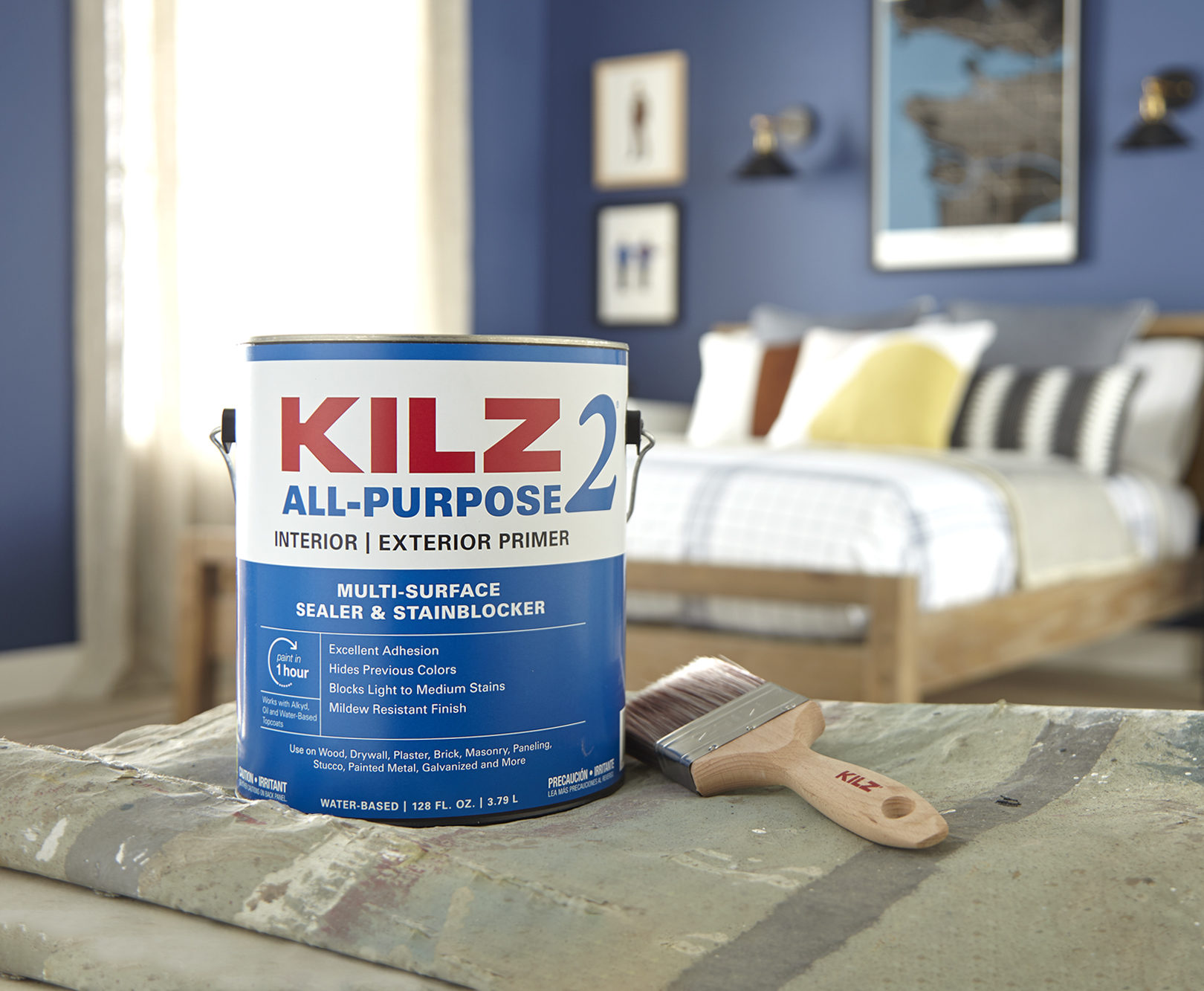
Tips for Painting Walls and Cabinets
June 1, 2020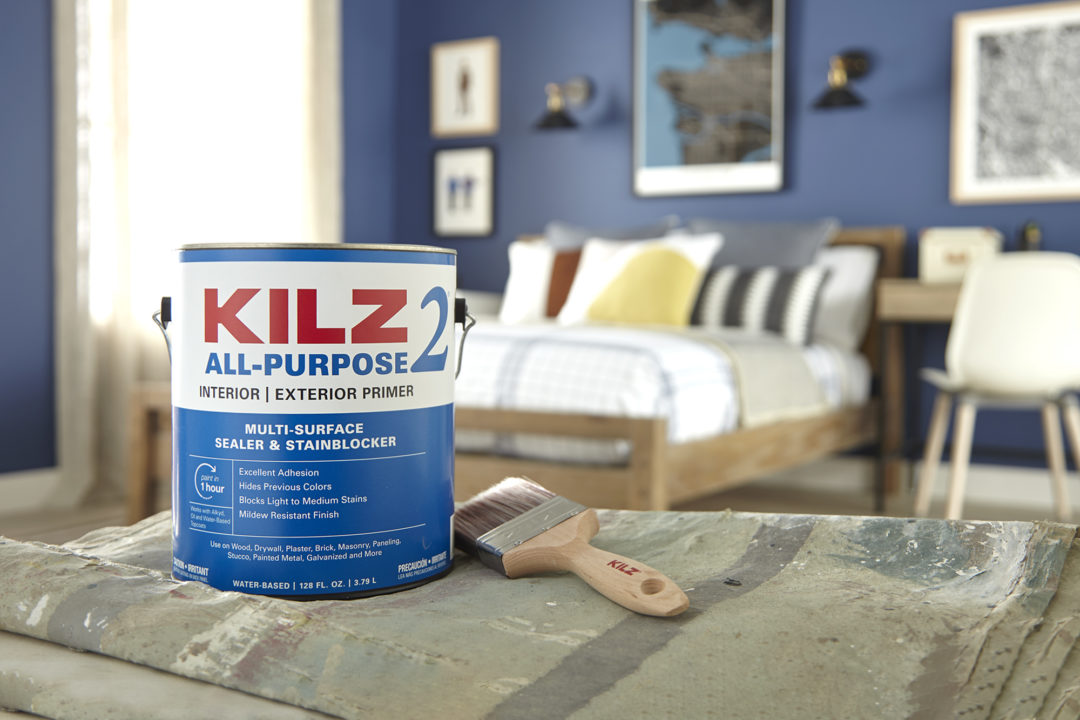
Painting your walls or cabinets is an easy and low-cost way to update any room in your house, and most painting projects can be completed in just one weekend. Equally as important as choosing the right paint color is ensuring you prime first with the right primer. Without priming before painting, you risk poor paint adhesion and previous colors or stains seeping through and ruining your new paint color.
Using the right primer ensures that your topcoat color will appear on the walls as you expected it to. If you’re painting over a darker colored wall with a new lighter shade, KILZ 3® Premium Primer works to block previous dark paint colors from seeping through and changing the look of your new paint. When painting over a light color with a new darker hue, it’s still equally important to prime first. KILZ 2® All-Purpose primer is a great choice for light to dark color changes. And if your walls have tough or exceptionally dark stains or damage from smoke or water, KILZ® Original Primer and KILZ Restoration are both formulated to block severe stains.
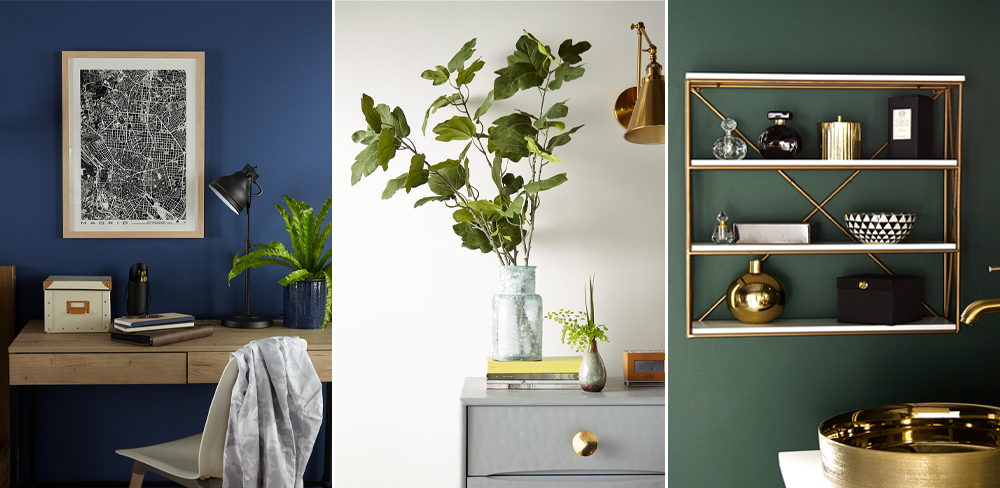
Priming before painting ensures your paint color pops!
What if you’re painting cabinets, do you need to prime? If you want excellent paint adhesion and for your colors to appear in their truest hue – the answer is yes! Primer also makes your paint job durable, and that is especially important in high-traffic areas like kitchens. You often find cabinets in kitchens, bathrooms and laundry rooms, and these areas of the home are subject to fluctuating temperatures and humidity levels that can make paint peel. For these spaces, a primer like KILZ Mold & Mildew dries with a mildew resistant primer finish that helps protect and extend the life of your paint.
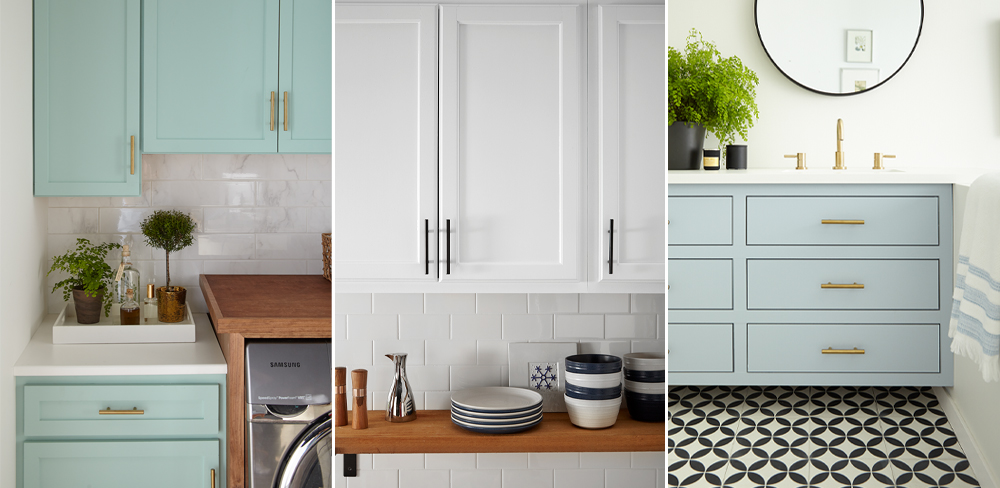
When painting cabinets, priming first ensures excellent adhesion and truer color from your topcoat.
While priming before painting can seem like an extra step, it’s a vital part of the painting process!
Always remember to refer to our website kilz.com or product back labels for additional information on which primer is right for your project and detailed instructions on how to apply our products.
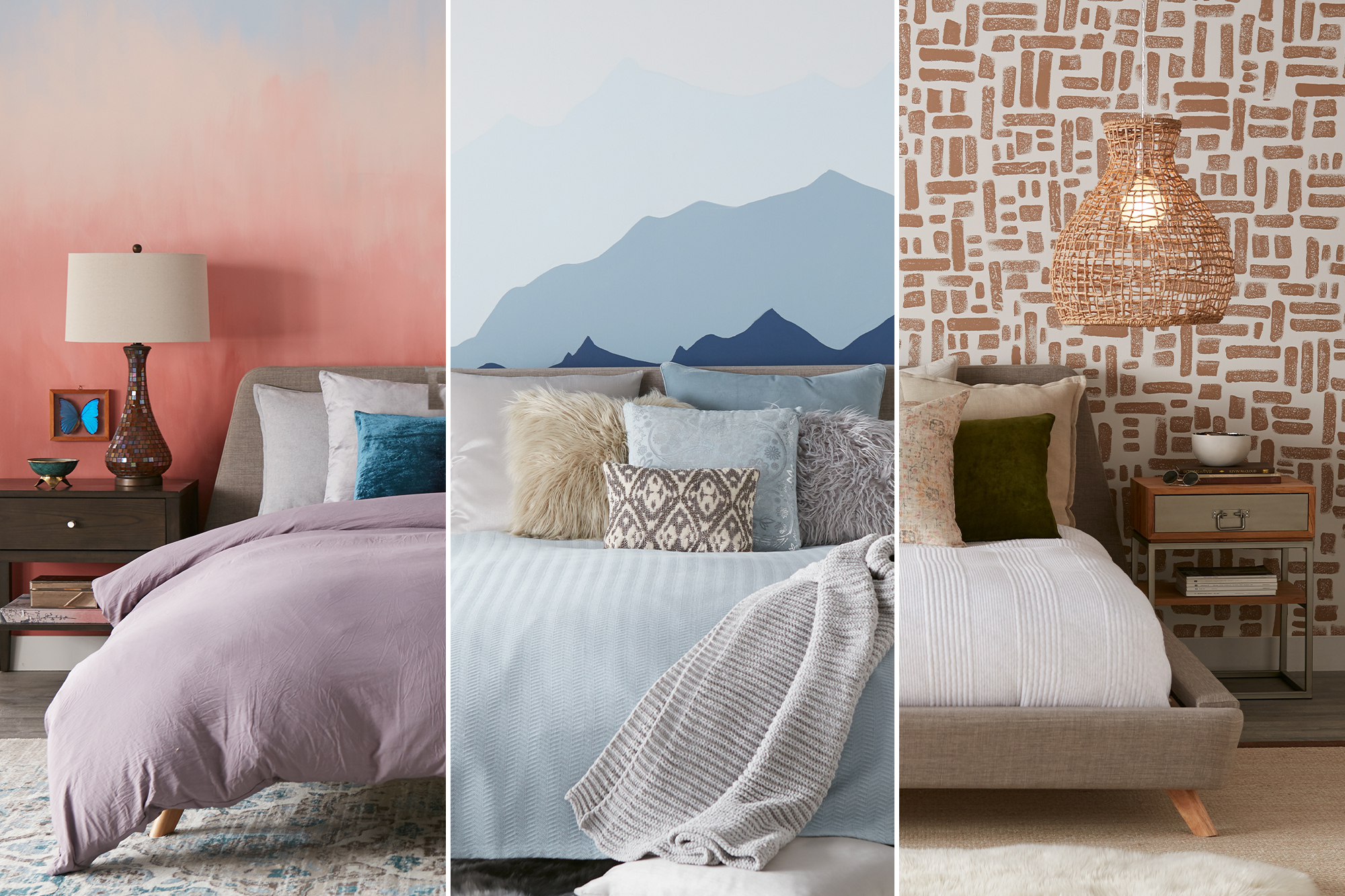
Accent Walls that Wow
May 29, 2020Looking for a way to add some wow-factor to your walls? In need of bedroom paint ideas? We’ve got both of those covered in this post, looking at three unique accent wall projects that were all completed with just primer and paint! While the typical accent wall is simply one wall in a room that is a different color than the rest, we took it a step further and created three accent walls that are their own works of art. In each project, we primed the walls with KILZ 2® All-Purpose primer prior to painting to ensure the colors chosen really popped!
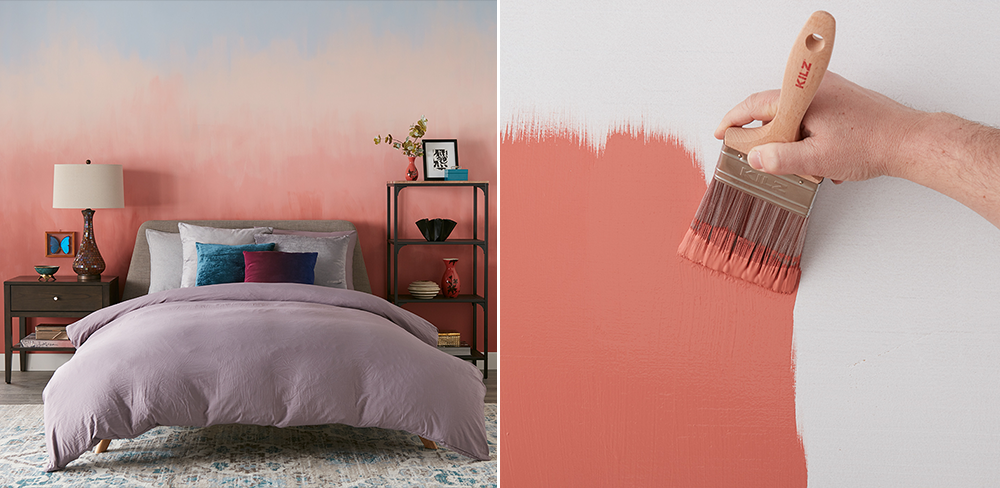
We tapped into three different bedroom paint color palettes for the accent walls, the first being calming blue hues. Our inspiration for the first accent wall was a beautiful, misty mountain range. We used KILZ Tribute® Paint and layered lighter to deeper blues to create a stunning mountain-inspired mural. The colors chosen were Alaskan Mist TB-03, Sea Balm TB-43, Chambray Blue TB-45 and Behr’s Laguna Blue PPU14-18 and were painted by hand in an organic mountain shape. Light blue bedding, pops of metallic and faux fur perfectly complement the calming misty mountain accent wall.
Alaskan Mist
Chambray Blue
Sea Balm
Laguna Blue
For our next bedroom painting project, we took an imaginary trip around the globe to Greece and chose the colors of a summer sunset in Santorini to create a stunning ombre accent wall. The accent wall was painted using Tribute in Flapper Pink TB-92, Northern Sky TB-42, Baked Terra Cotta TB-94, and Penny Luck TB-96. The paint colors were layered from lighter to darker, painting with a brush to blend from one to the other. Minimalist furniture, grey and purple bedding and black accents finished the space and let the ombre accent wall shine.
Flapper Pink
Baked Terra Cotta
Northern Sky
Penny Luck
The third accent wall project took a neutral color palette and added a dash of jungle-inspired fun, for a painted wallpaper look. After priming, the wall was painted with KILZ Tribute in White Modern TB-09 as the base, followed by freehand sponge painting using Pottery Beige to create a unique patterned accent wall. The faux wallpaper wall was the perfect backdrop for natural toned bedding with pops of dark green, and a statement chandelier over the bed completed the space.
White Modern
Pottery Beige
An accent wall is fun and easy way to use primer and paint to totally transform a room. We hope you enjoyed these three accent walls and are inspired for your next painting project!
Always remember to refer to our website kilz.com or product back labels for additional information on which primer is right for your project and detailed instructions on how to apply our products.
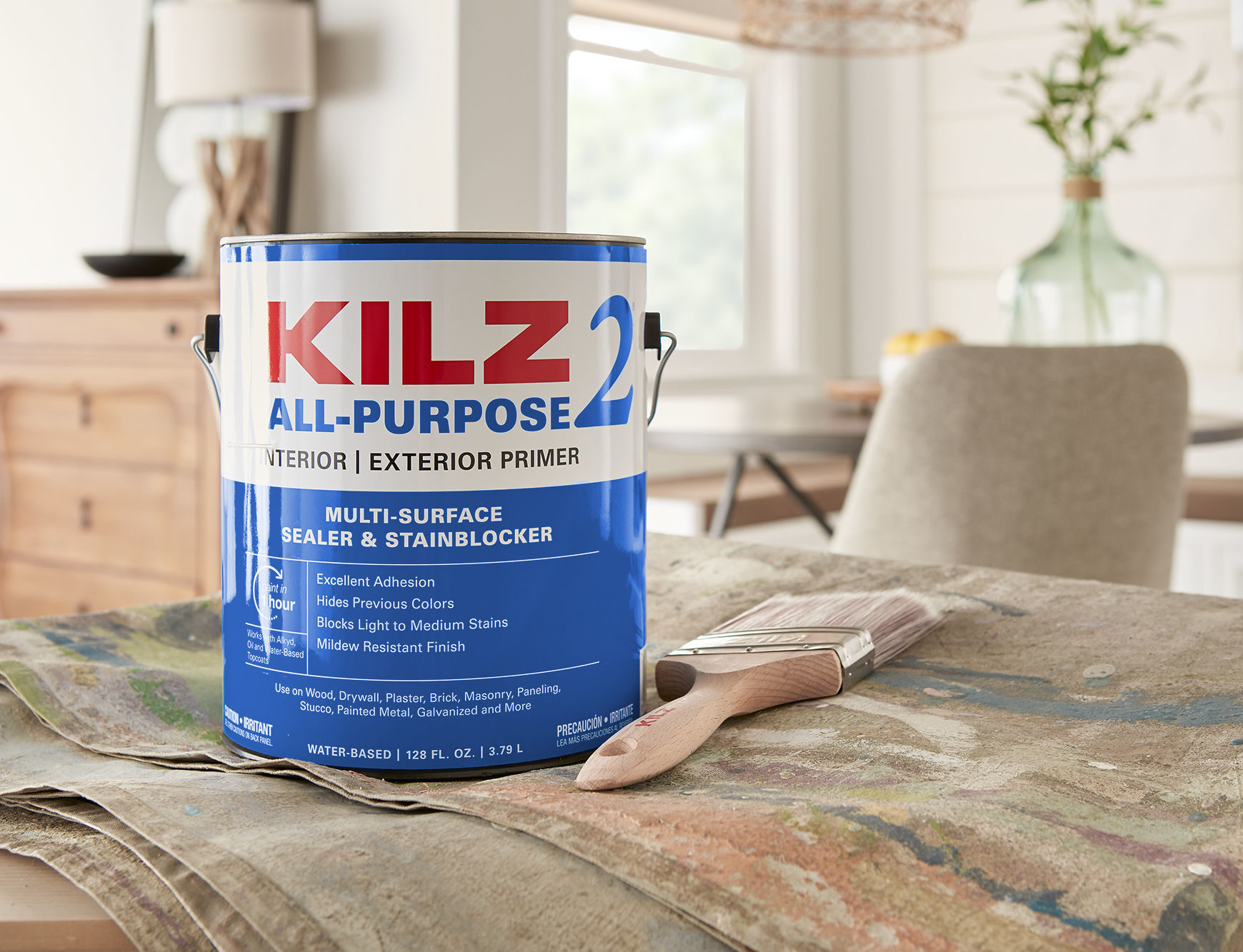
How Primer Affects Paint Color
April 15, 2020Springtime and DIY projects go hand in hand, and this spring season it feels like that sentiment rings truer than ever before. With all of us staying home to practice safe social distancing we have a lot more time on our hands, making it the perfect time to tackling a DIY painting project. But before you paint, don’t forget to prime!
While the paint’s job is all about color, the primer’s job is to prepare the surface for painting and make that color the best it can be. Even with a simple color change where you’re covering an existing lighter color with another color, it wouldn’t be advisable to paint without priming. If you paint without priming first, the end result could be a color that is a slightly different shade that the color you selected. For a simple color change from walls to furniture re-painting projects, KILZ 2® All-Purpose Primer is right for the job.

There are also certain surface types that are extremely porous, including brick and wood. If you paint on these surfaces without priming, there is a good chance the paint will seep into the surface – and that means your color won’t be as vibrant or true as you were expecting. When you’re looking to seal porous surfaces, KILZ® 1 Standard Primer and KILZ 2 All-Purpose are both great primer choices.
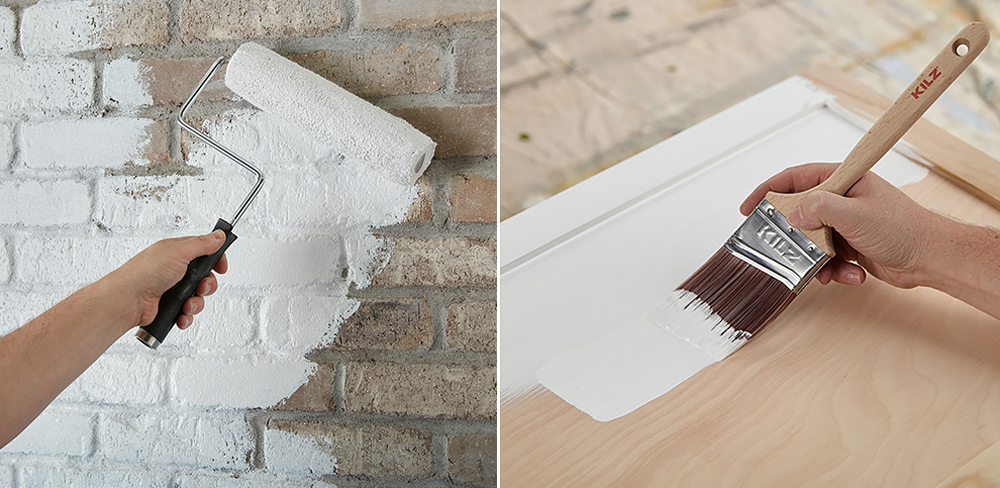
And it goes without saying that when painting over a darker color with a new, fresh-as-spring lighter shade, you definitely want to prime first. Otherwise shades like deep red will show through and change the tone of the new paint color you selected. If you’re going from a darker to a lighter color in your DIY painting project, KILZ® 3 Premium Primer has a thick, high-hide formula that is up to the task.
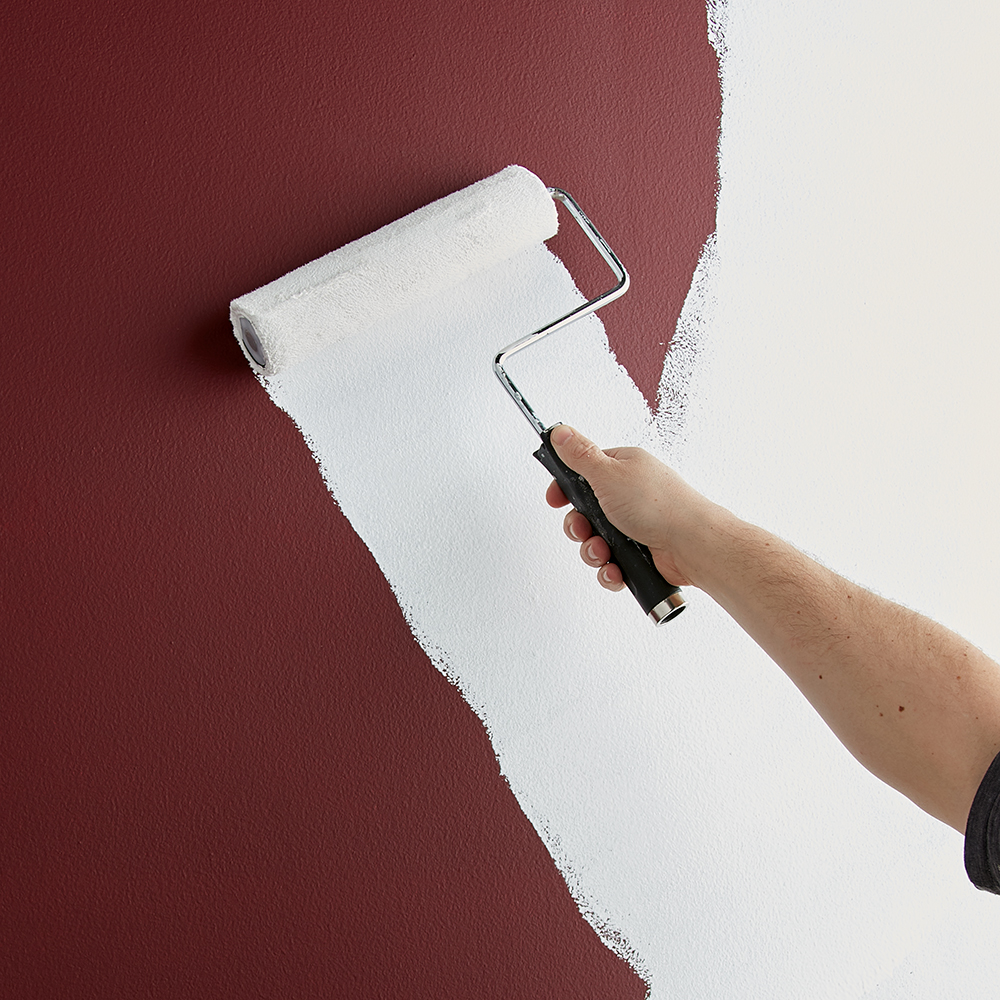
Prime first for dark to light color changes!
In all of these cases, priming before painting lessens the number of topcoats required – saving you time and ensuring your finished DIY project is the color you desired!
Always remember to refer to our website kilz.com or product back labels for additional information on which primer is right for your project and detailed instructions on how to apply our products.
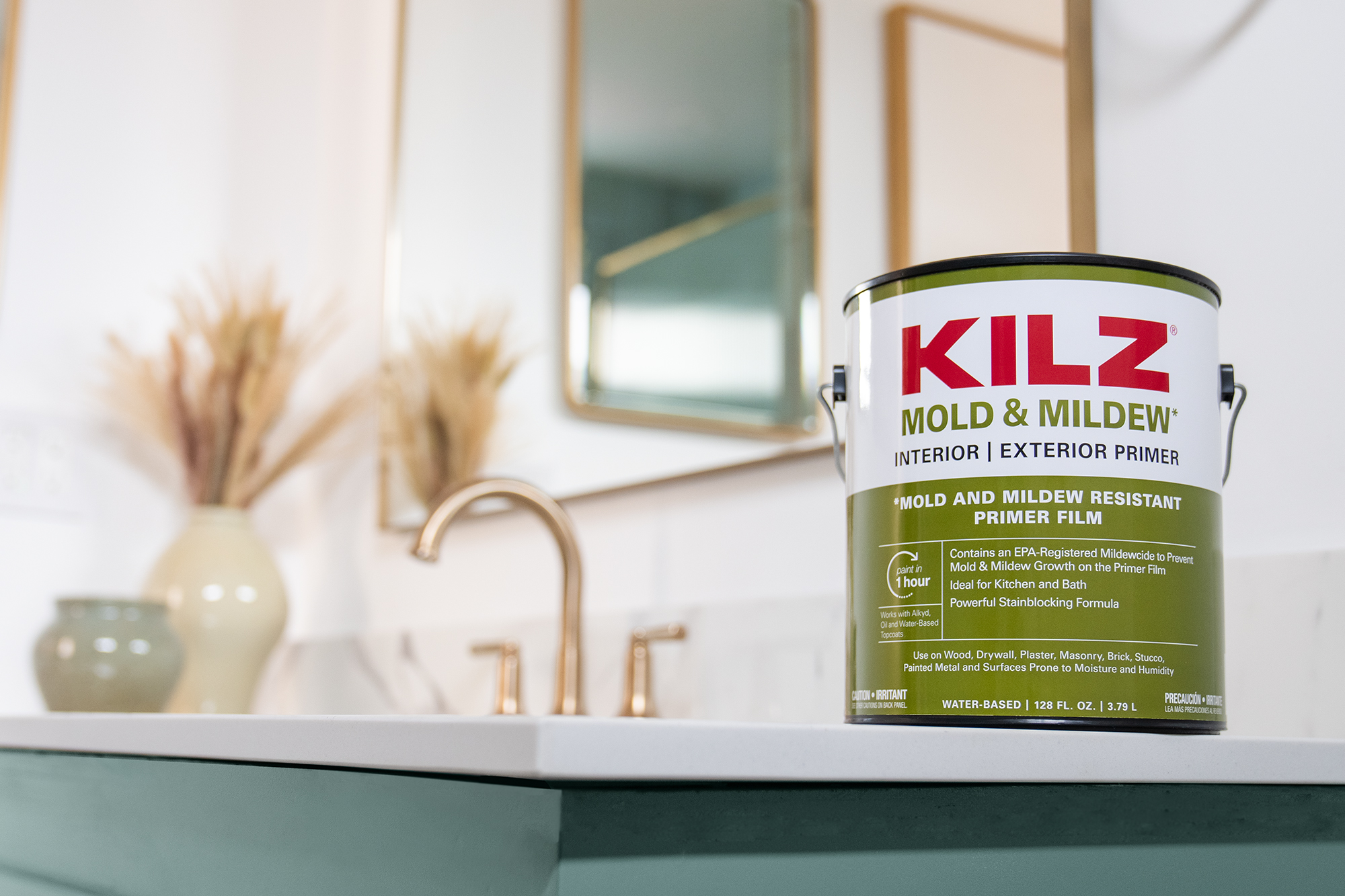
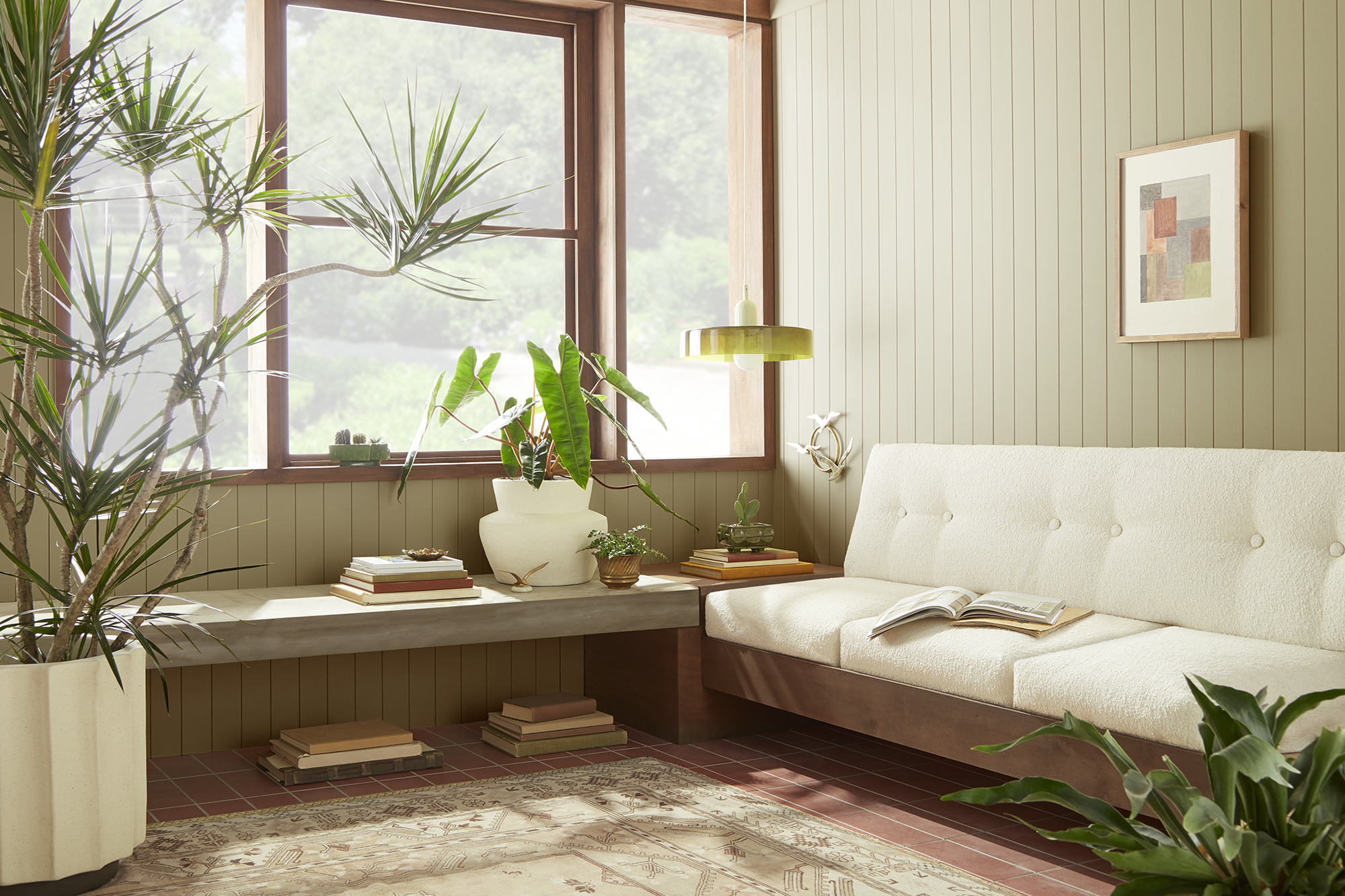


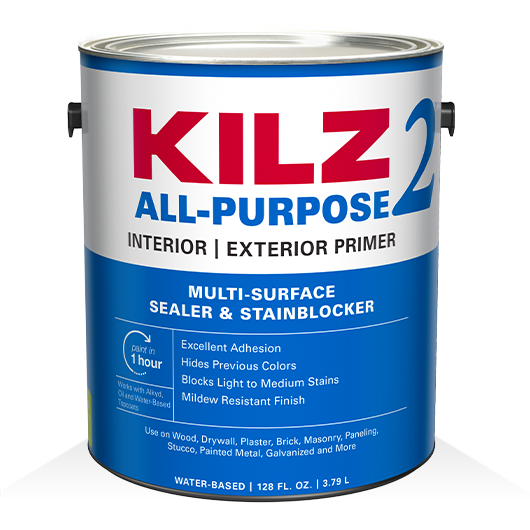
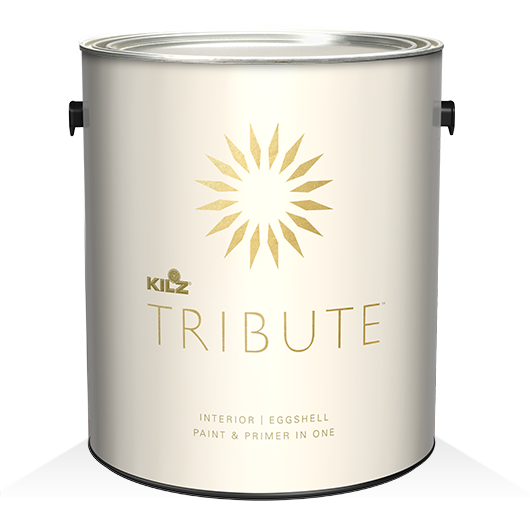
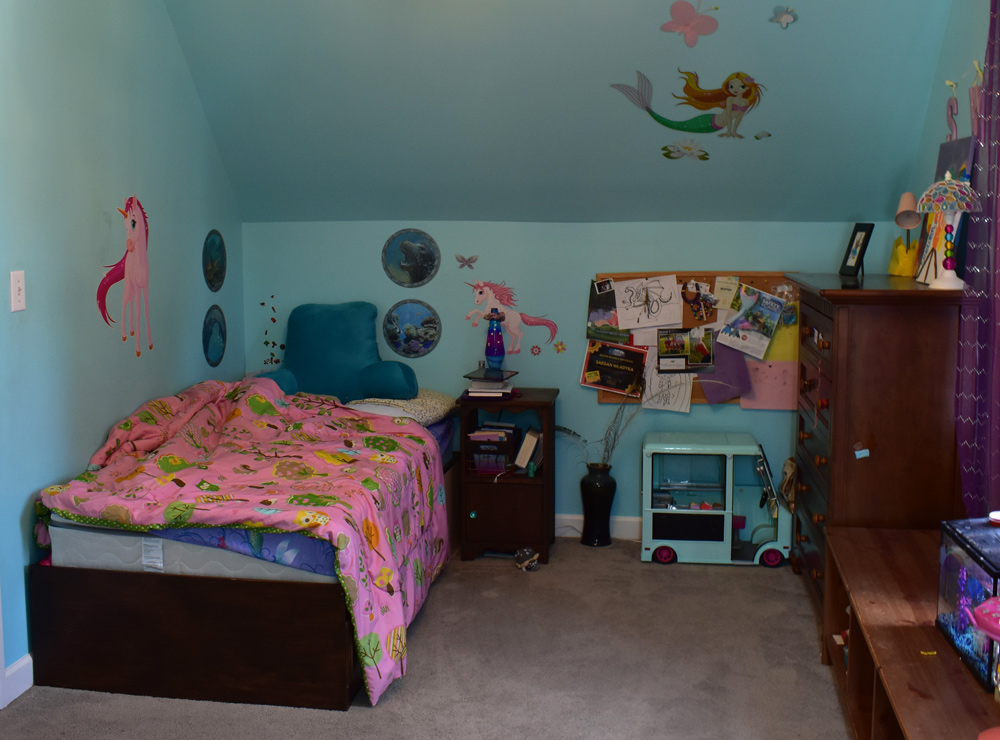
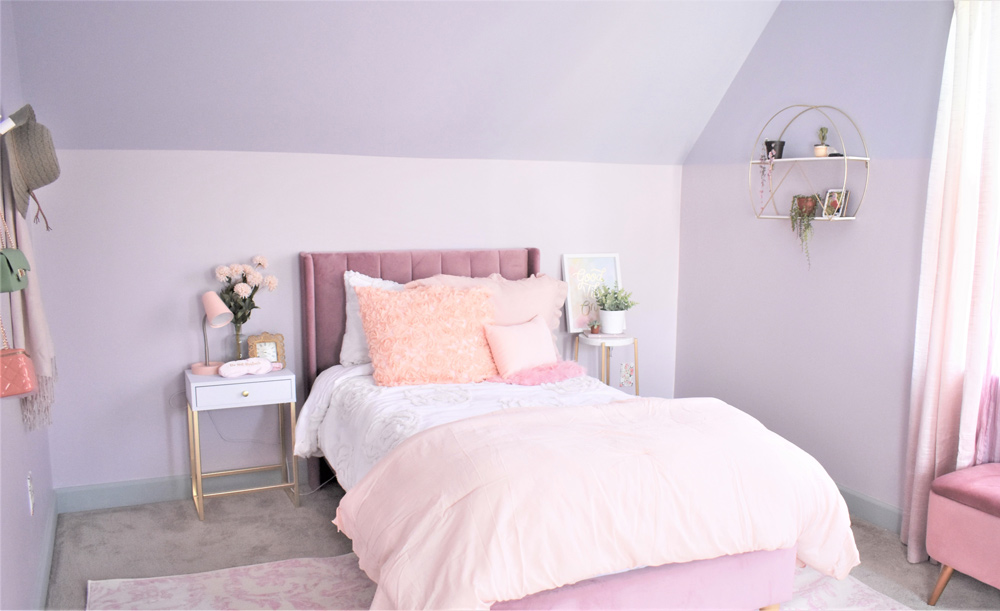
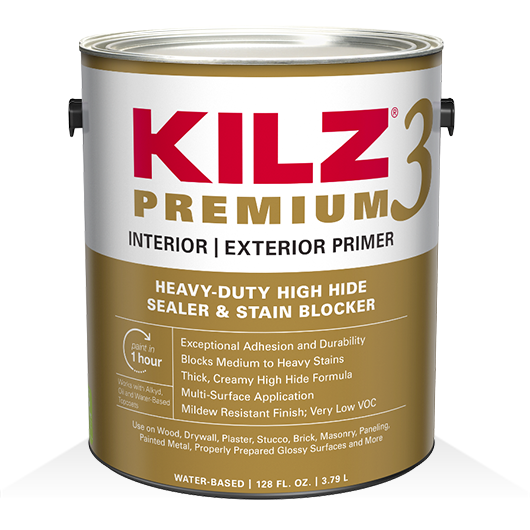
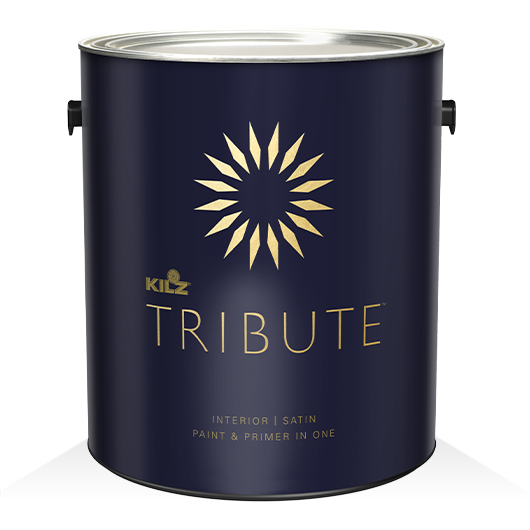






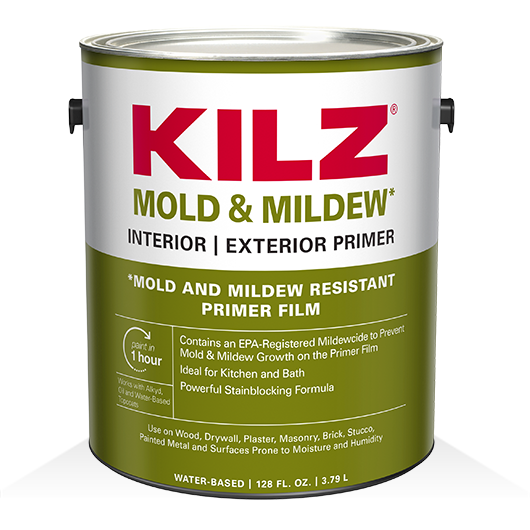

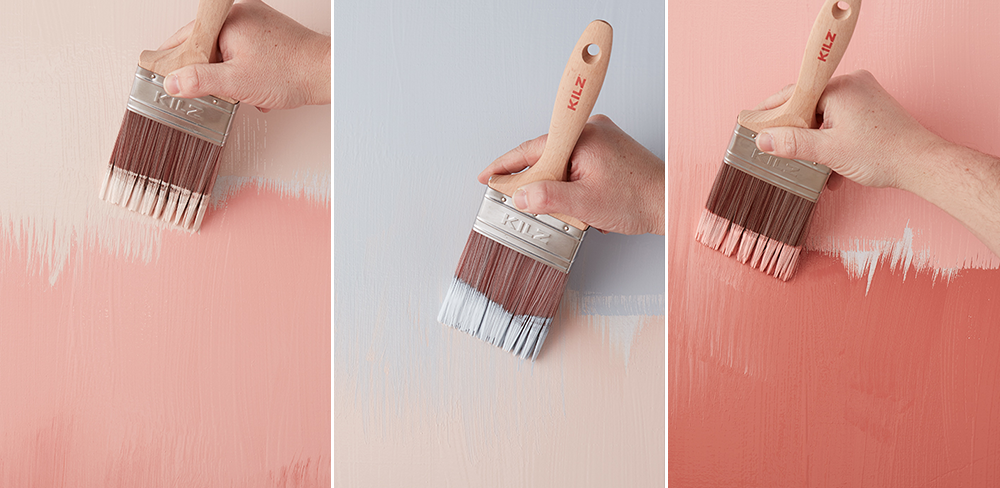




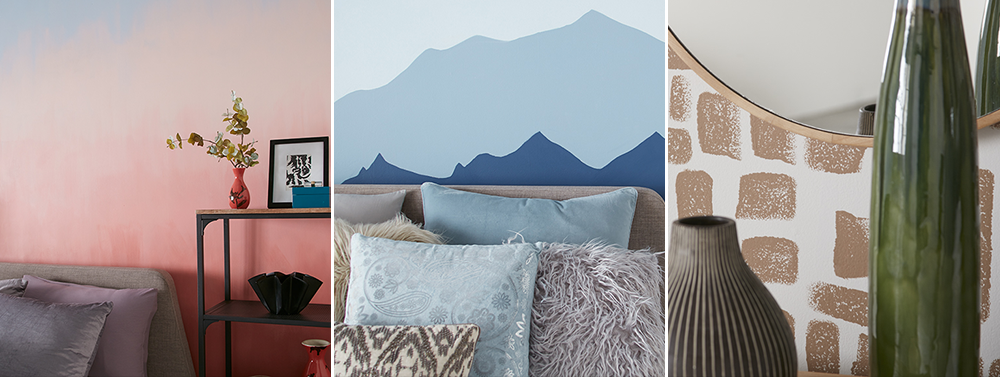
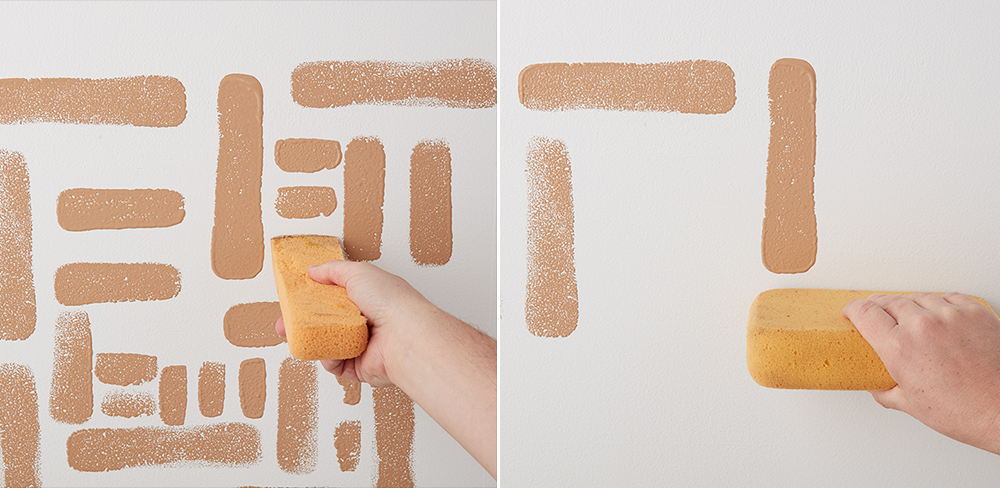
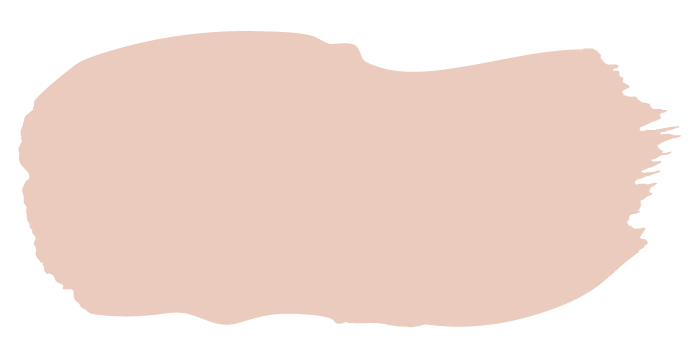
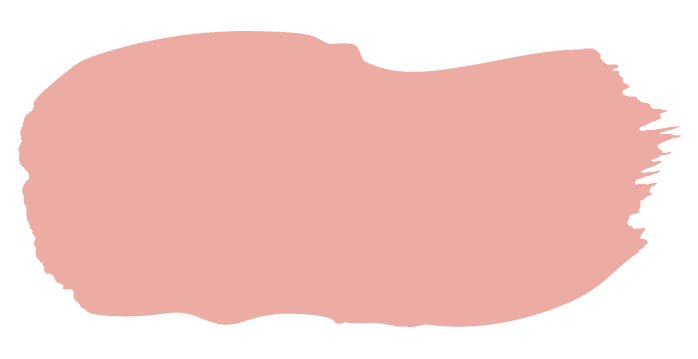

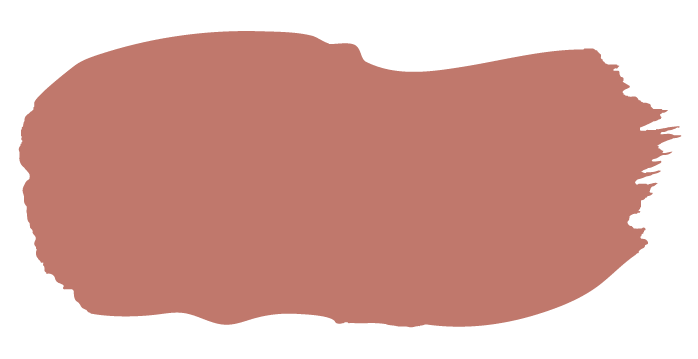
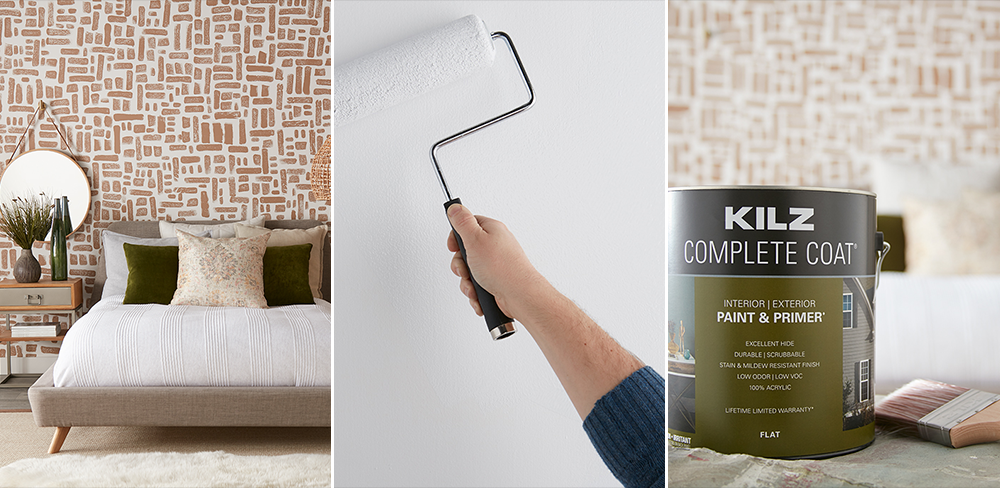


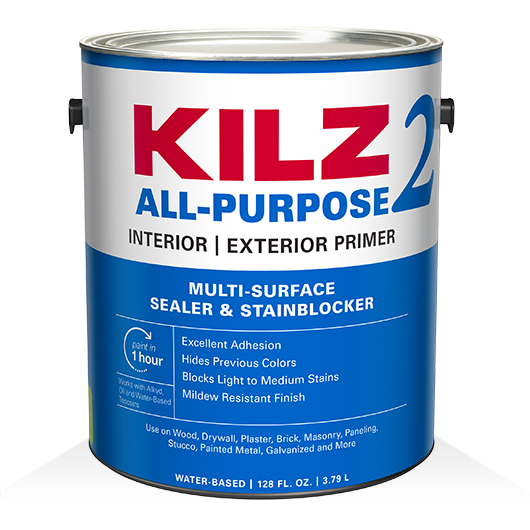
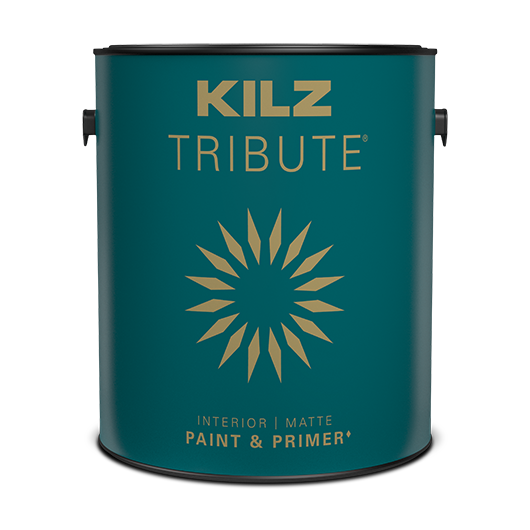
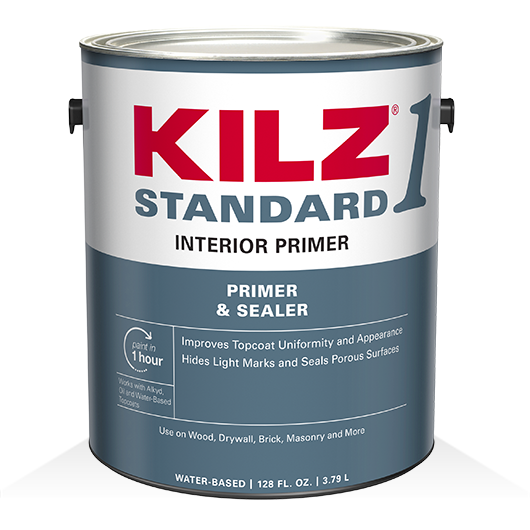
join the conversation:
SHARE this post: